At the top of Vermont’s Glastenbury Moutain, at elevation 3748 feet, sits the Glastenbury Fire Tower. Look any direction, and you see nothing but mountains. With only 624,000 residents, Vermont has the second smallest population of any US state, so there is plenty of wilderness. The mountain sits in the town of Glastenbury, population 8. It was here that I had brought my daughter, Shelby, and her husband, Julian to join me to hike.
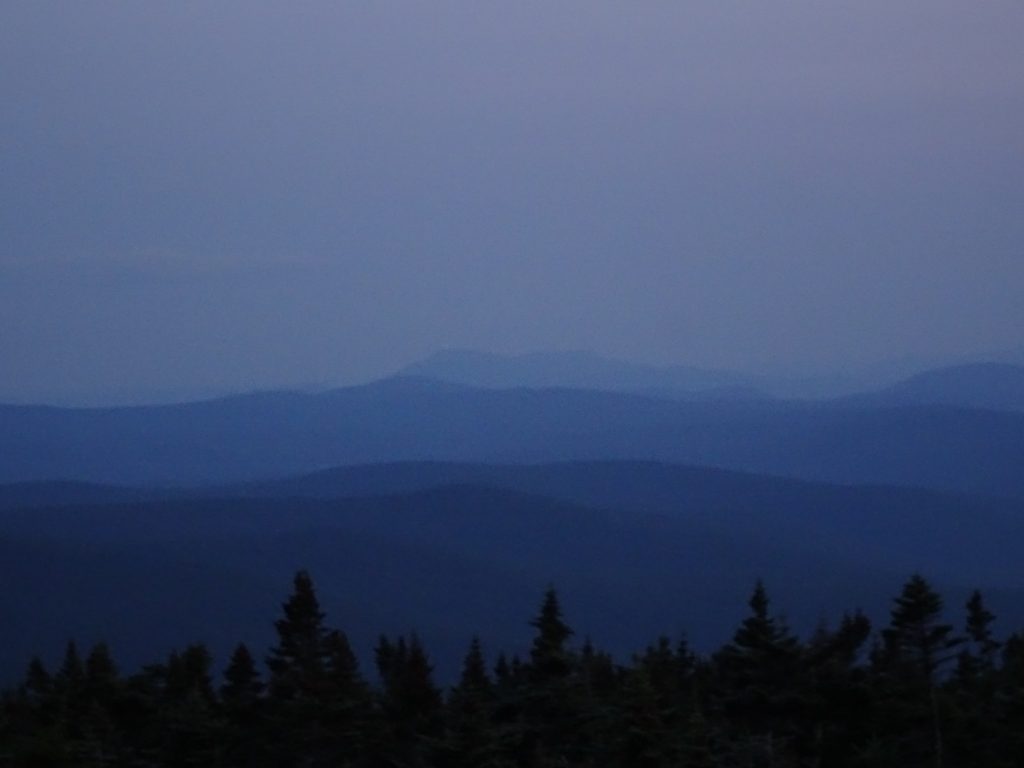
View south from the tower at dusk (Beacon on top of Mount Greylock’s War Memorial faintly visible)
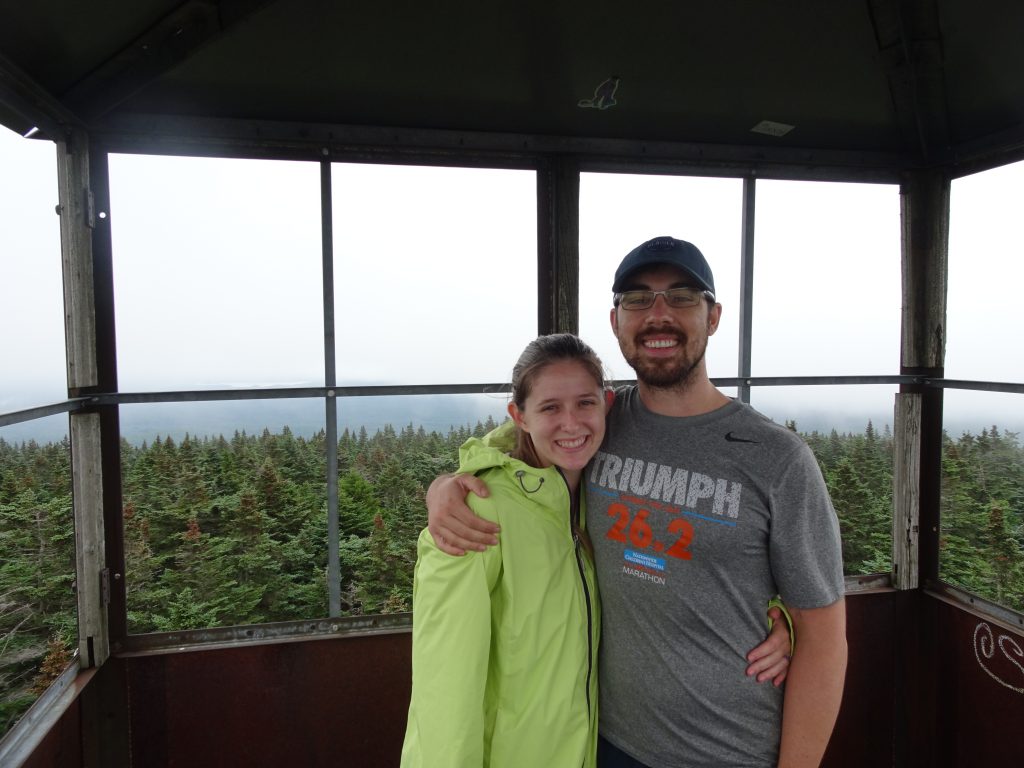
Shelby and Julian in the tower
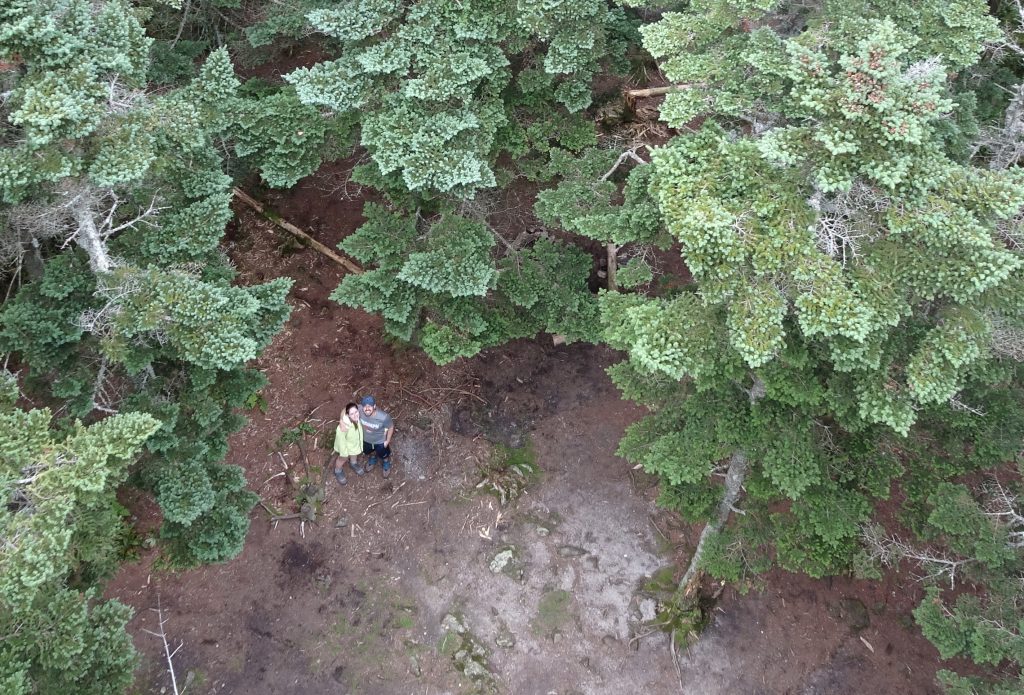
Looking down from the tower
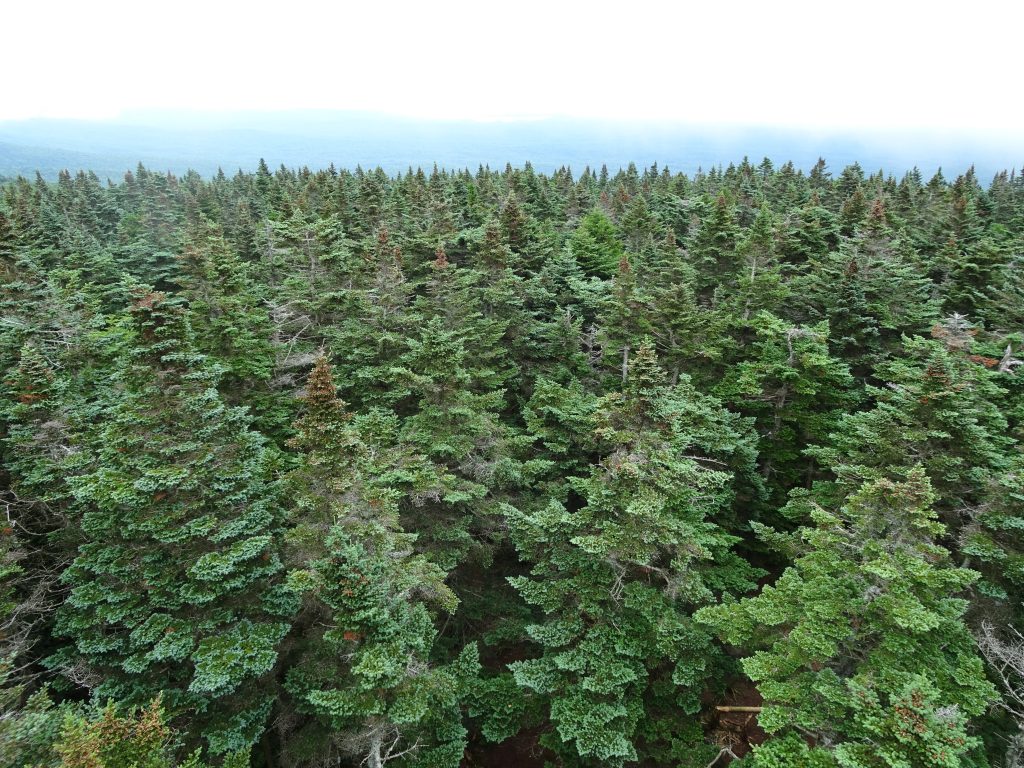
View of the spruce forest
We had made plans for Shelby and Julian to join me to hike on August 1st, starting wherever I would happen to be on the trail at that point, which turned out to be southern Vermont. Of the 150 miles of the Appalachian Trail that travels through the state, we ended up hiking the section between Bennington and Manchester. This is one of the remotest parts of the trail. After leaving the trail head in Bennington, the next road crossing is a gravel road over 20 miles away. The trail in Vermont has a reputation for its mud (hikers call the state “Vermud”), and it did not disappoint. Although we had the misfortune of hiking in the rain three out of our five days together, Shelby and Julian were real troopers.
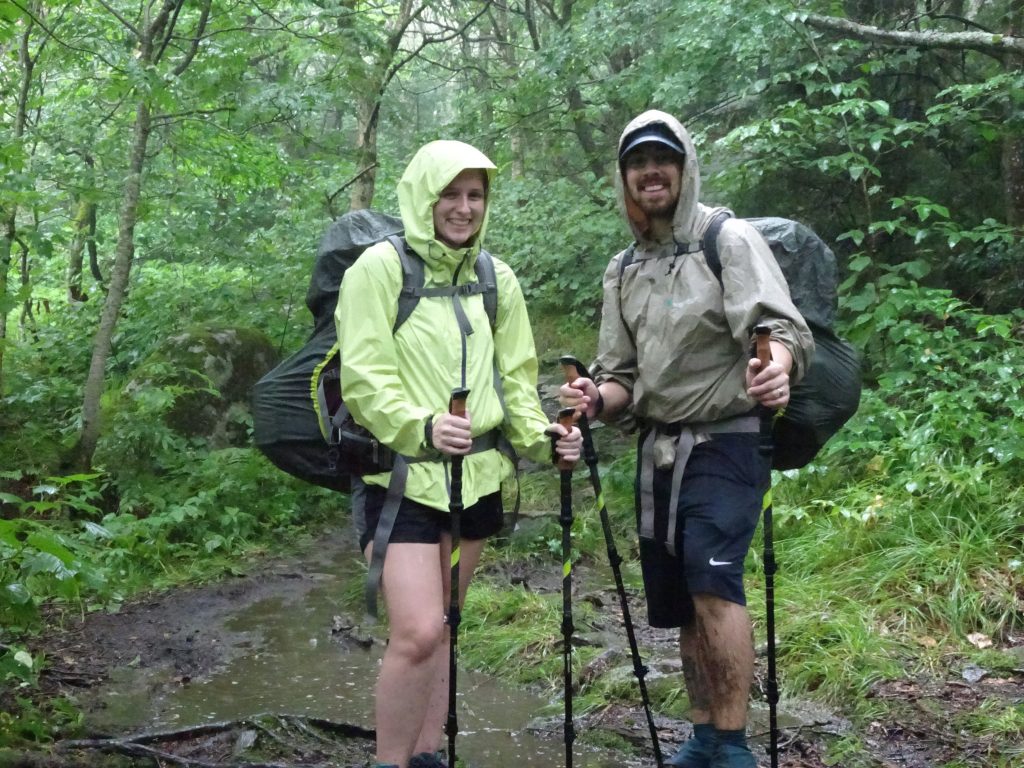
Shelby and Julian in the rain
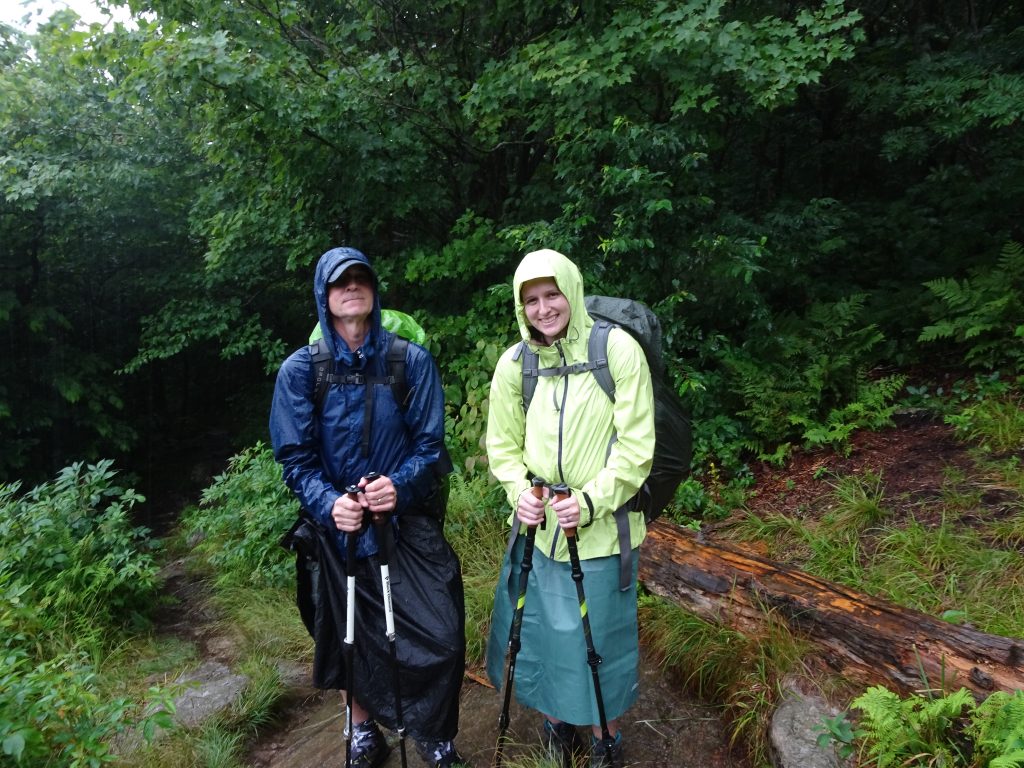
Shelby and her dad sporting their rain skirts
On the shuttle ride up to the trail head, Shelby and Julian were immediately exposed to trail life. Exiting the shuttle, they both commented about the bad smell in the vehicle. When I admitted that I didn’t smell anything, they accused me of having “a broken sniffer”. A few days later, we were comparing notes with some other hikers that had used the same shuttle. Those hikers also were unaware of the bad smell. This proves that rather than having a bad sniffer, I have a “thru hiker adaptation”, which sounds a lot better.
The trail was in exceptionally bad shape, which made for tough going. The rough trail conditions were a result of the rain, the swampy nature of the terrain, and reduced trail maintenance due to this trail section’s inaccessibility. Up and down trail, my experience has been that the closer you are to the trail head, the better the trail.
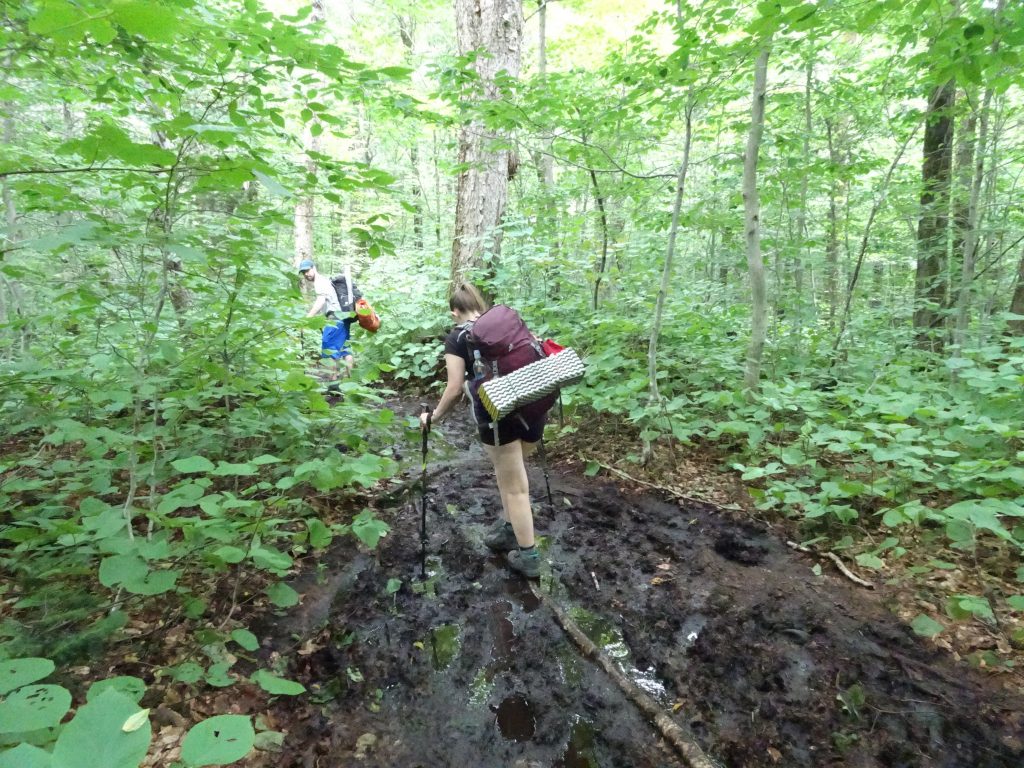
Shelby negotiating the bog
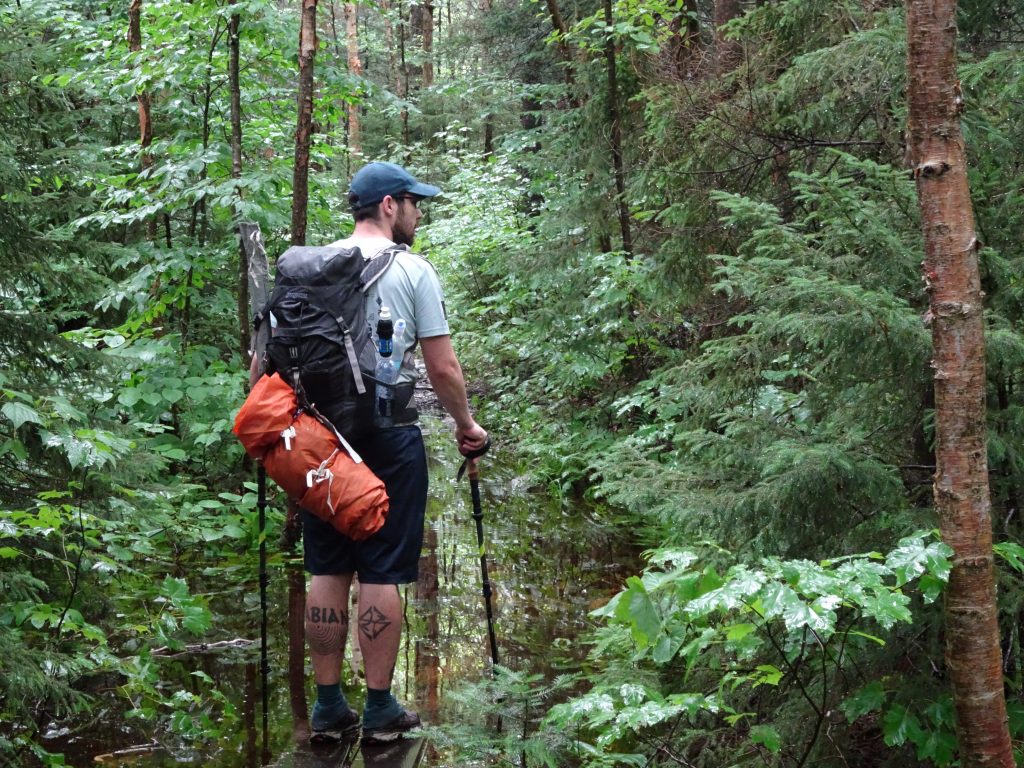
Julian contemplating his next step across the “pond”
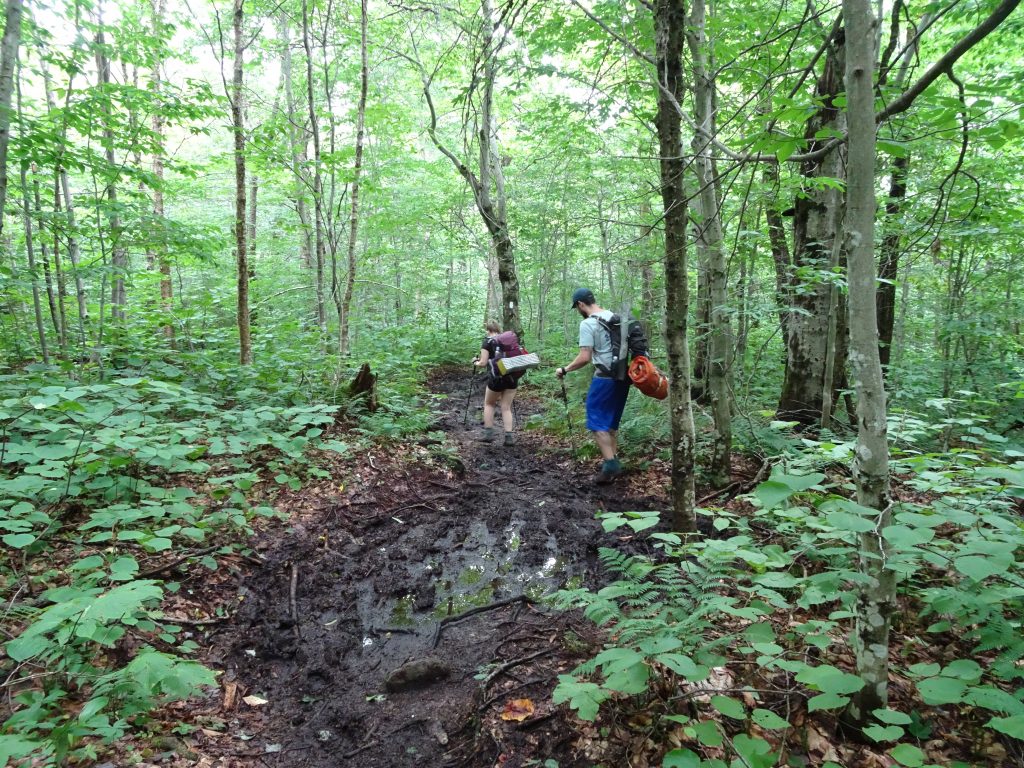
Mud, mud, and more mud
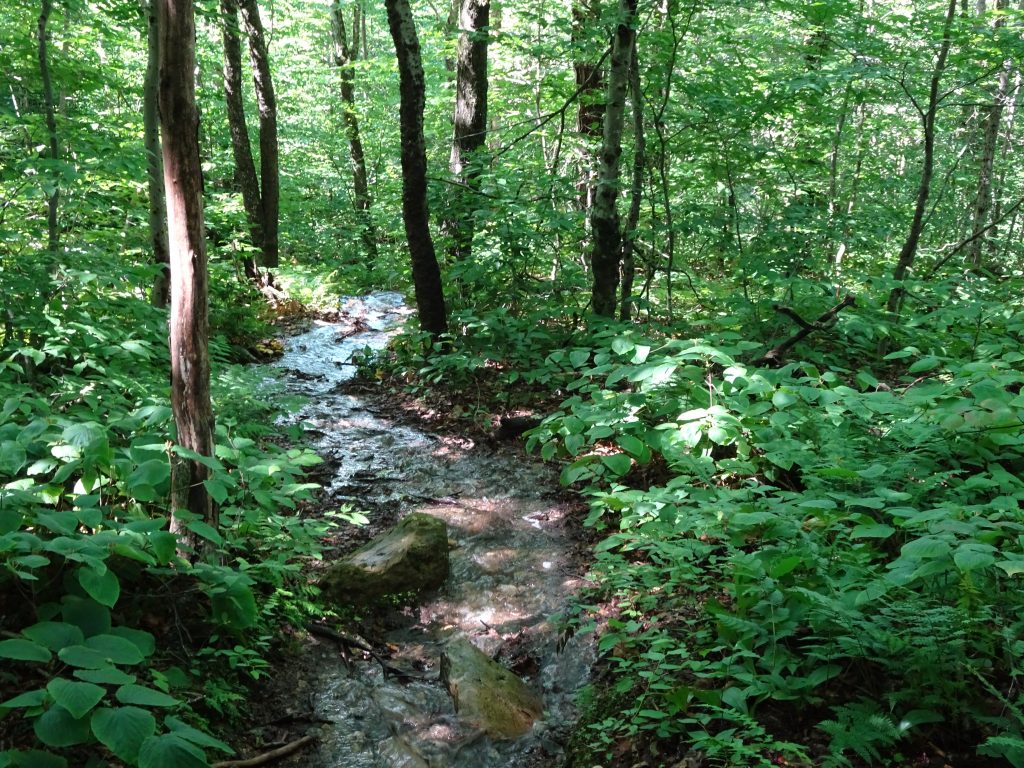
Is this a trail or a river?
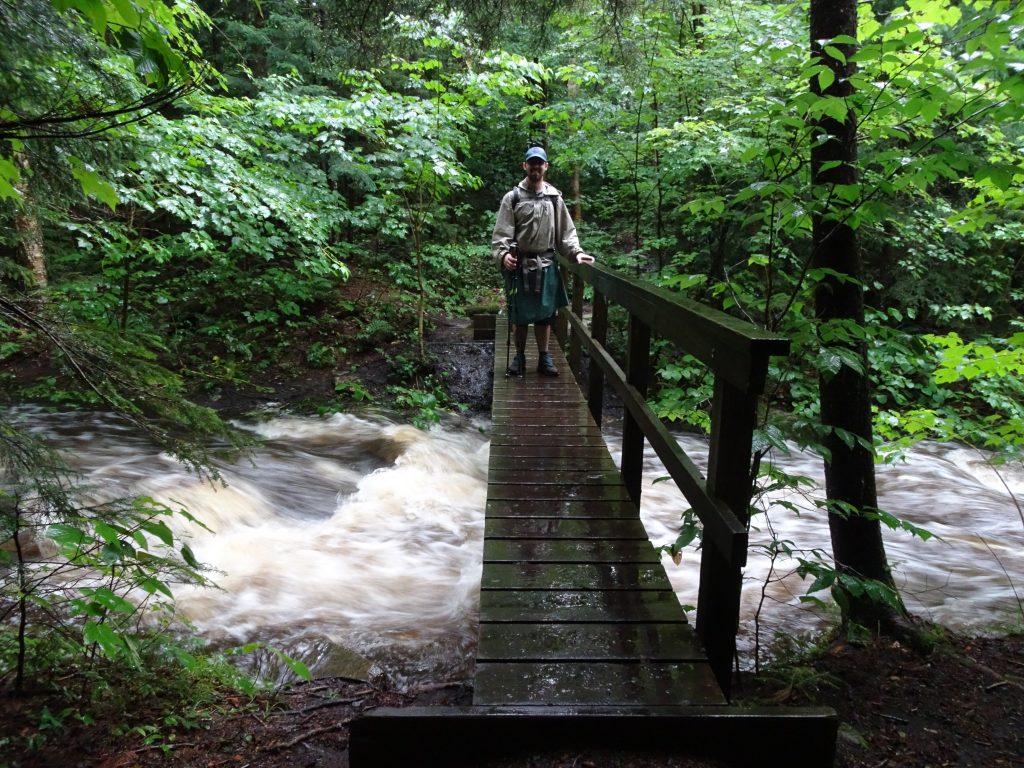
Rivers running high due to the rain
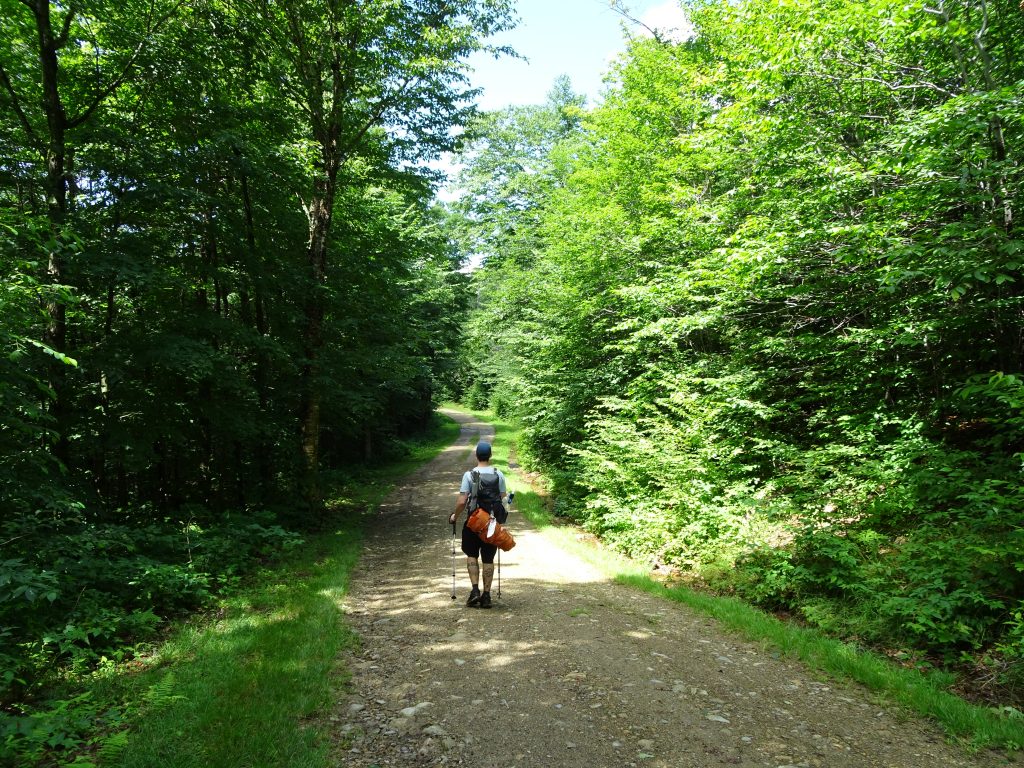
Finally, good trail and sunshine
Shelby and Julian got the “full” experience. They got to camp in the rain, camp by a shelter, “stealth camp” along the trail, and stay overnight in a shelter. For my part, I was just very happy to have their company.
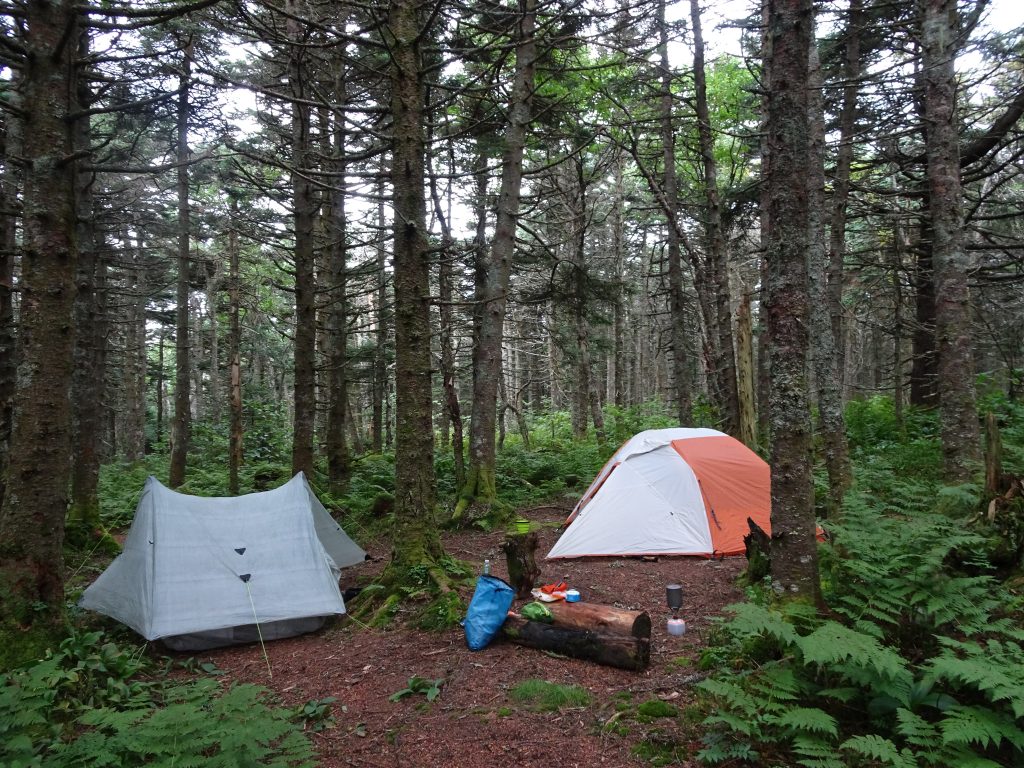
Stealth camp site at the top of Glastenbury Moutain
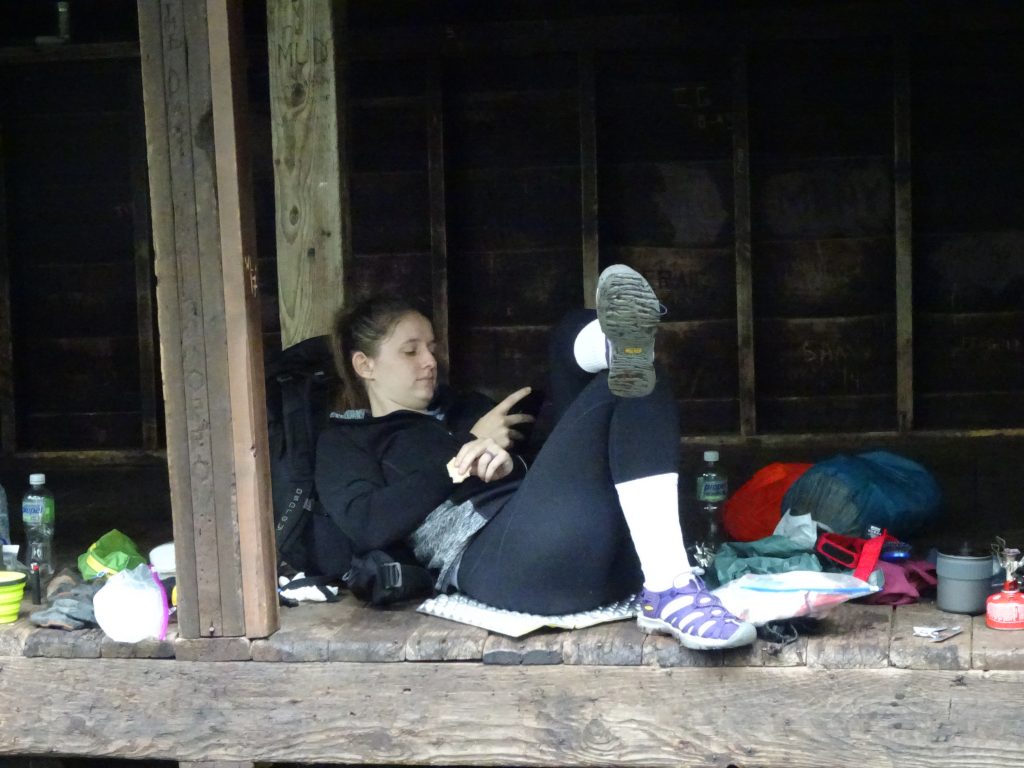
Shelby relaxing in her camp attire at the shelter
One night at the shelter, we ran into a guy who had come across another hiker who had broken his ankle and had ended up calling 911 for him. He said it took the rescue team about three hours to reach them. The rescue team consisted of two big burly guys, one with a T-shirt that read, “Truckers see more ___holes than doctors”. According to his story, one guy picked up the guy’s pack, and the other one picked up the hiker, and off they went. He said that although the rescuers didn’t look very “official”, they were the kind of guys he would want if he were in trouble.
At the top of Statton Mountain there is a small cabin which is occupied by a couple, Jeanne and Hugh Joudry, who act as caretakers for the mountain. Up until 1980, the couple had worked as rangers in the mountain’s fire tower, after which time it was retired in lieu of using aerial surveillance. In 1996, they came back to the mountain as caretakers to spend their “summer” there, May through October. They have been doing so ever since. A nearby ski area’s gondola that runs on weekends provides them a means to get into town for supplies. They provide helpful info to hikers such as the location of shelters and water sources. With thunder rumbling in the distance, they reminded us that it would be dangerous to climb up the metal fire tower. We’d already cyphered that one out for ourselves.
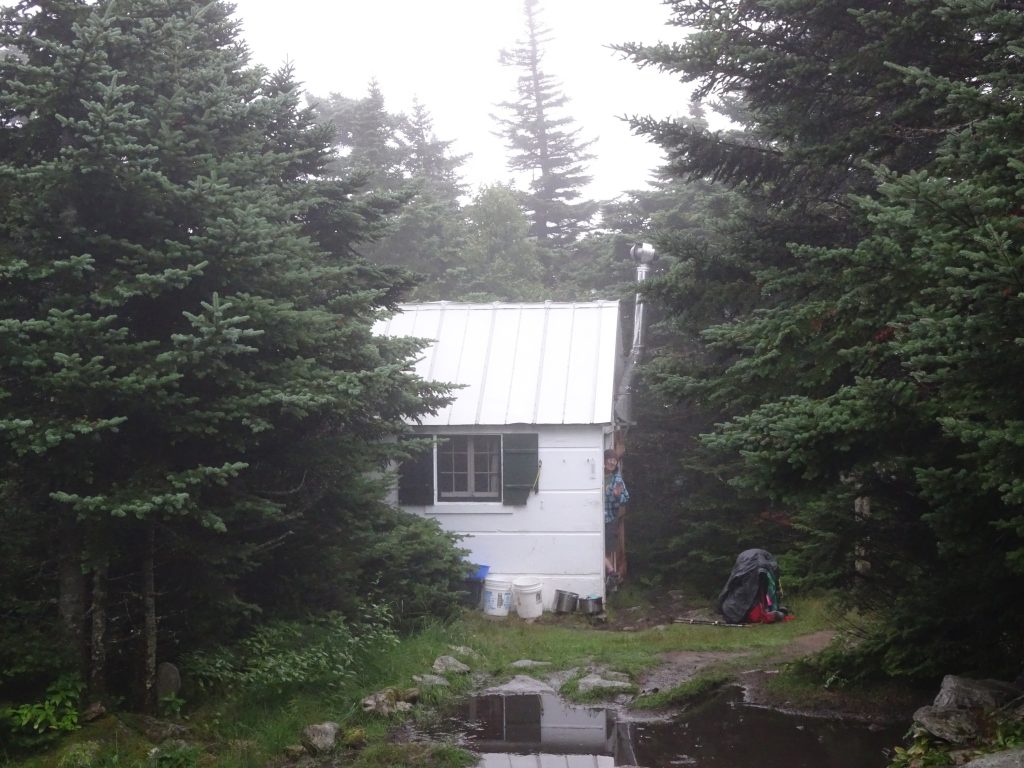
Stratton Mountain Caretakers Cabin
I found Vermont to be an extraordinarily beautiful place, both in town and in the countryside. Our taxi driver in Manchester took a dim view of the state. When I commented about how nice it was, he proceeded to go on a rant, explaining that the state was a “banana republic” where the privileged few had most of the money, and that one of their senators (Bernie Sanders) was a Communist. I considered pointing out that it is the communists who favor equal distribution of wealth, but I did not want to encourage him. Undeterred, the driver proceeded to quote a series of facts, like “50% of the children in the state are 200% below the poverty line. (I didn’t know what to make of that one.) I was curious, so I searched the web and found that Vermont is the 14th ranked state for having the least poverty. Based on this, and from what I saw in town and on the trail, I think people in Vermont are doing okay. Our taxi man should spend some time in southern Appalachia. I could point out several towns for him where the paint is peeling right on Main Street.
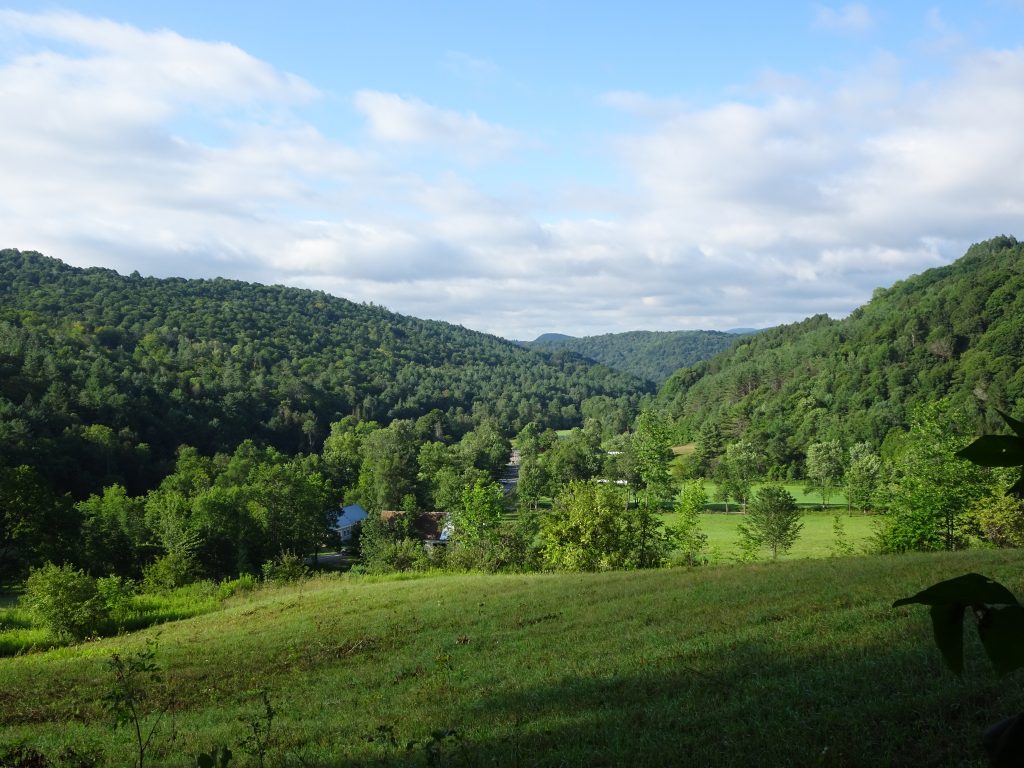
Back roads of Vermont
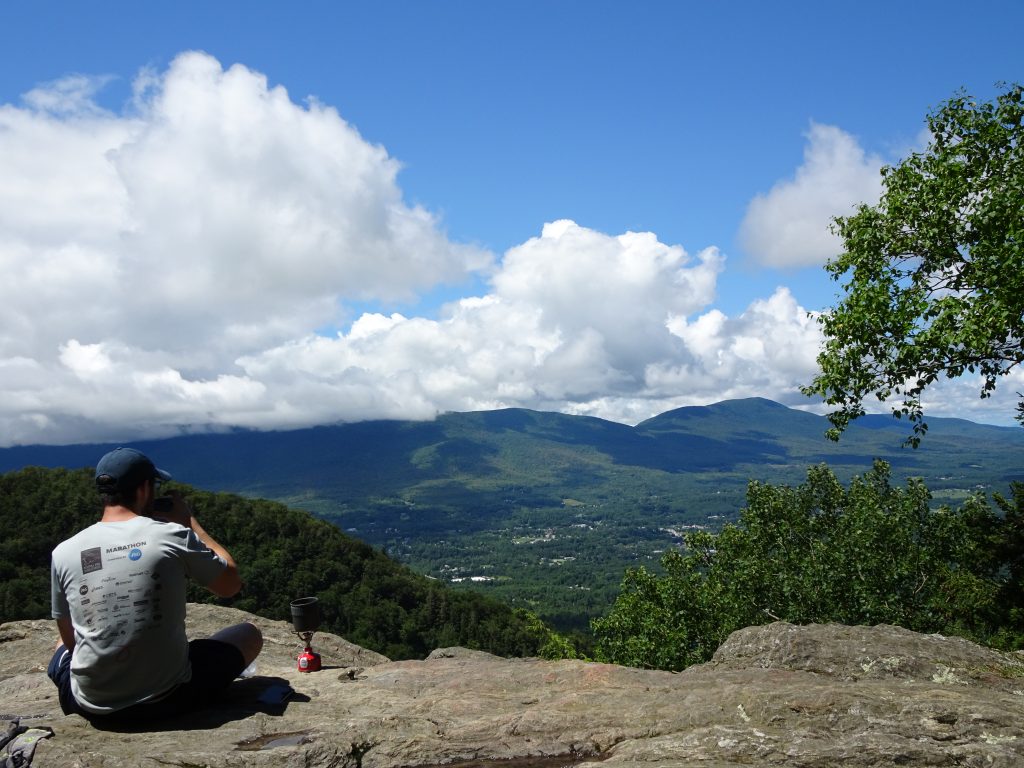
Coffee break on Prospect Rock with Manchester in the distance
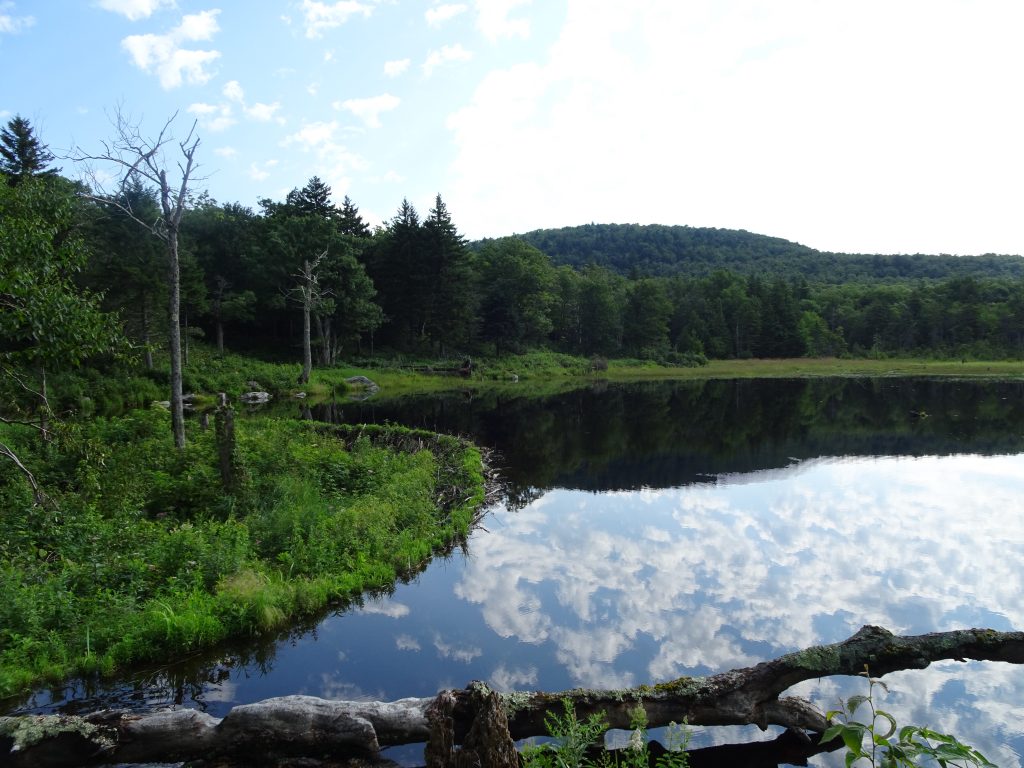
Beaver dam with impressive semi-circular design
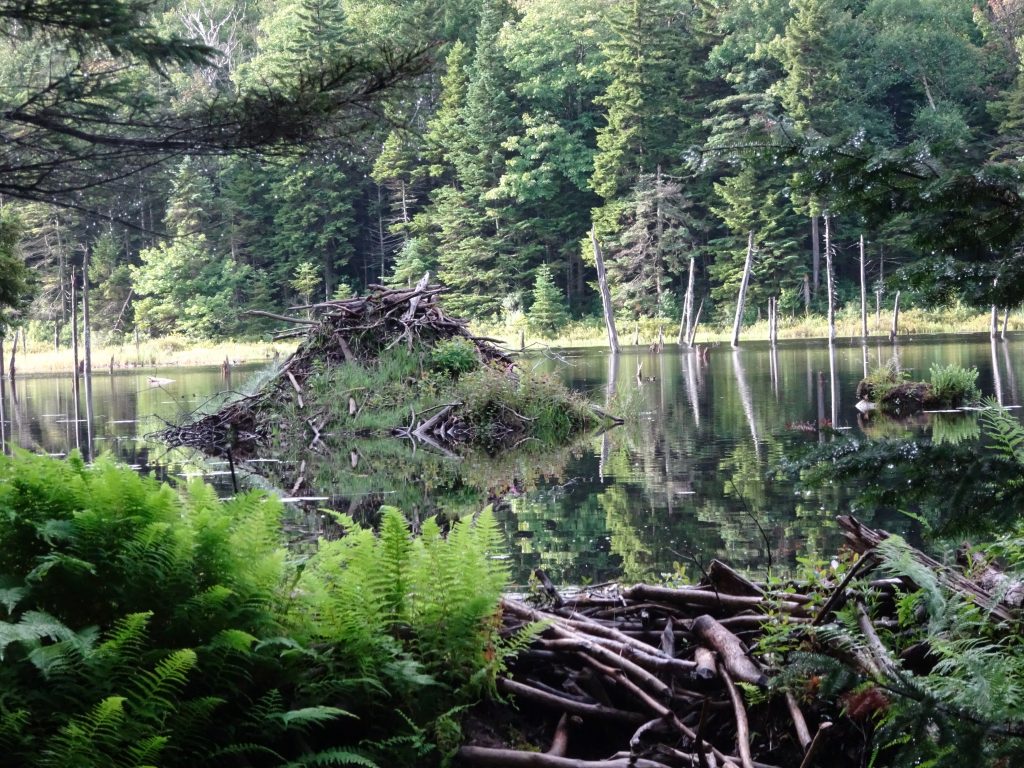
Beaver lodge
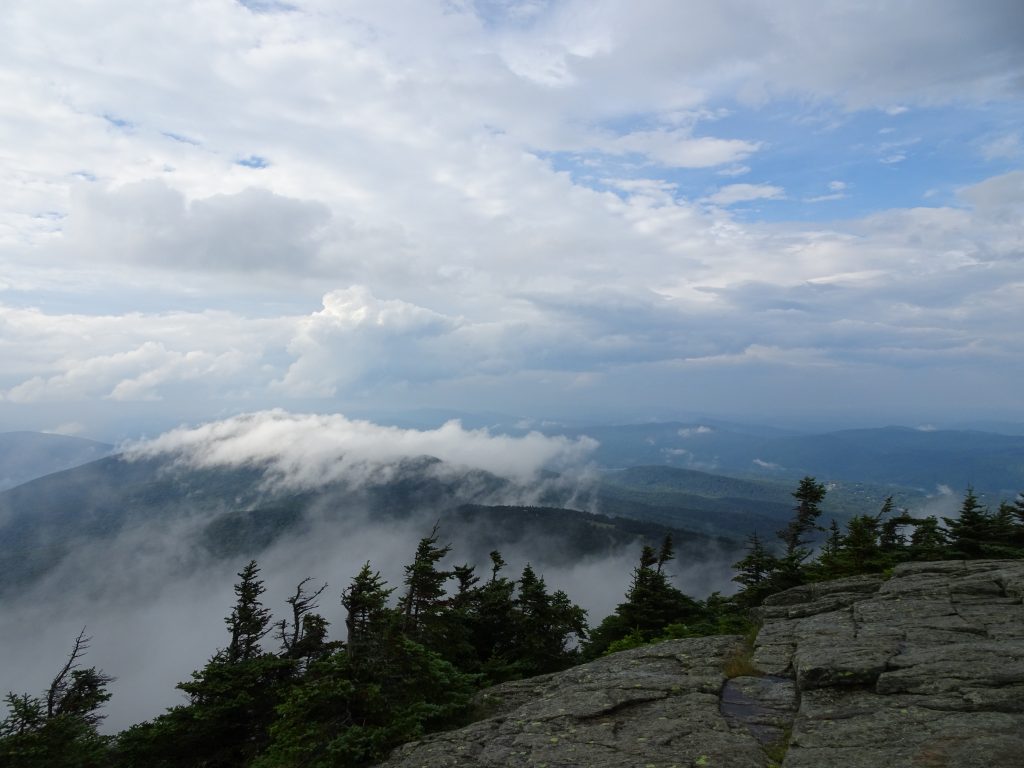
Stormy view from the top of Killington Mountain
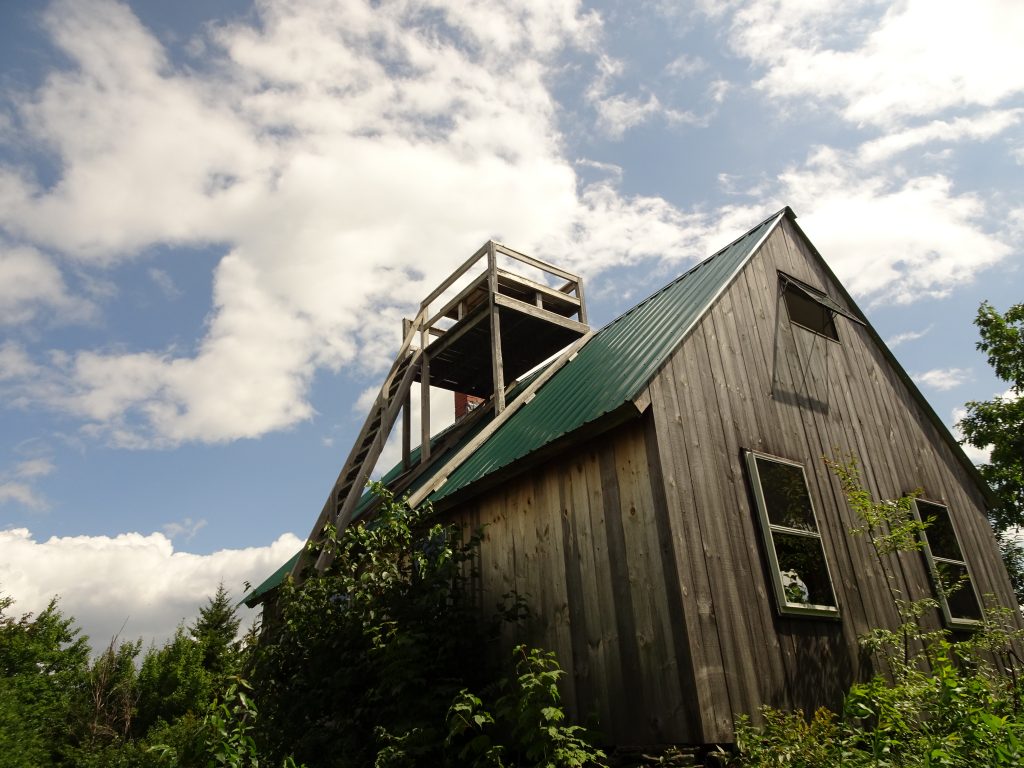
“The Lookout” – Private cabin free for hikers to use

Randy taking in the view from the lookout platform
For some reason, I thought they still collected maple syrup by hanging buckets off of trees. Imagine my surprise when at several locations, I came across a series of plastic pipes and hoses connecting the maple trees. They apparently use the blue tubing to tap the trees and the black pipe to collect and carry the maple sap down the mountain. At the base of the mountain, they open the spigot and out comes the sap!
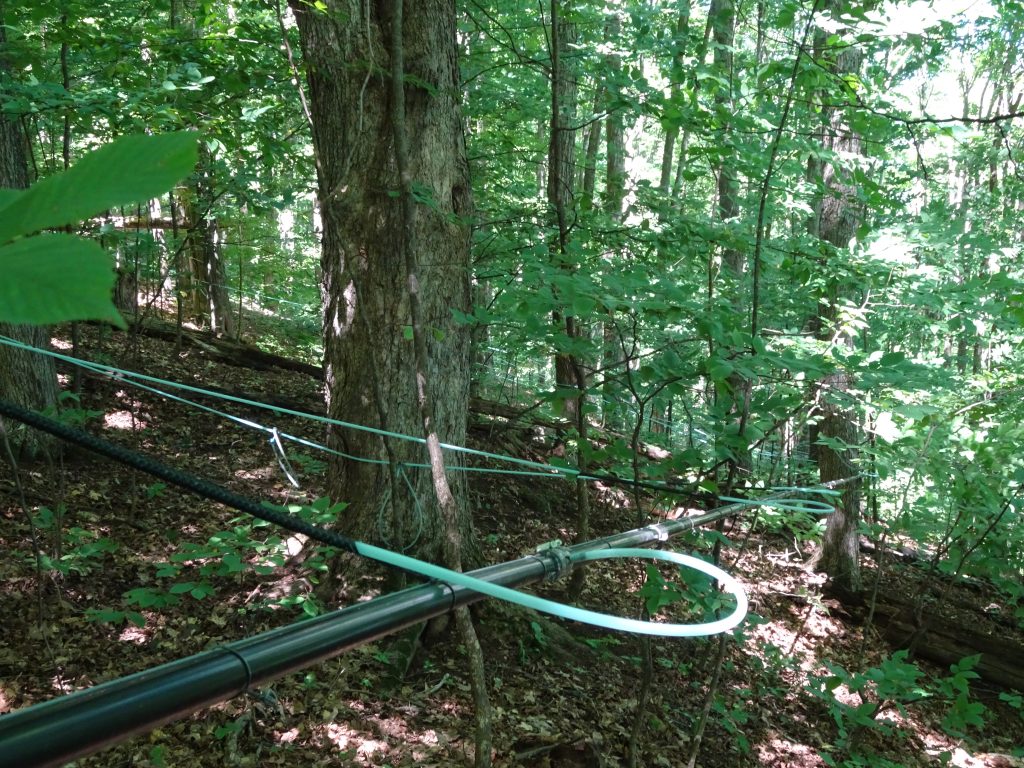
Plumbing for collection of maple syrup
This post would be incomplete without talking about the trees. In my opinion, Vermont has the most beautiful forests of any state I have visited so far. Prior to this state, the maples and oaks ruled the hardwood forests. In Vermont, once you get to the higher elevations, the forests are predominately birch trees and beeches. I saw mainly three types of birches, the Paper Birch, the Yellow Birch, and the Sweet Birch. The Paper Birches are similar to White Birches, but have more heart-shaped leaves.
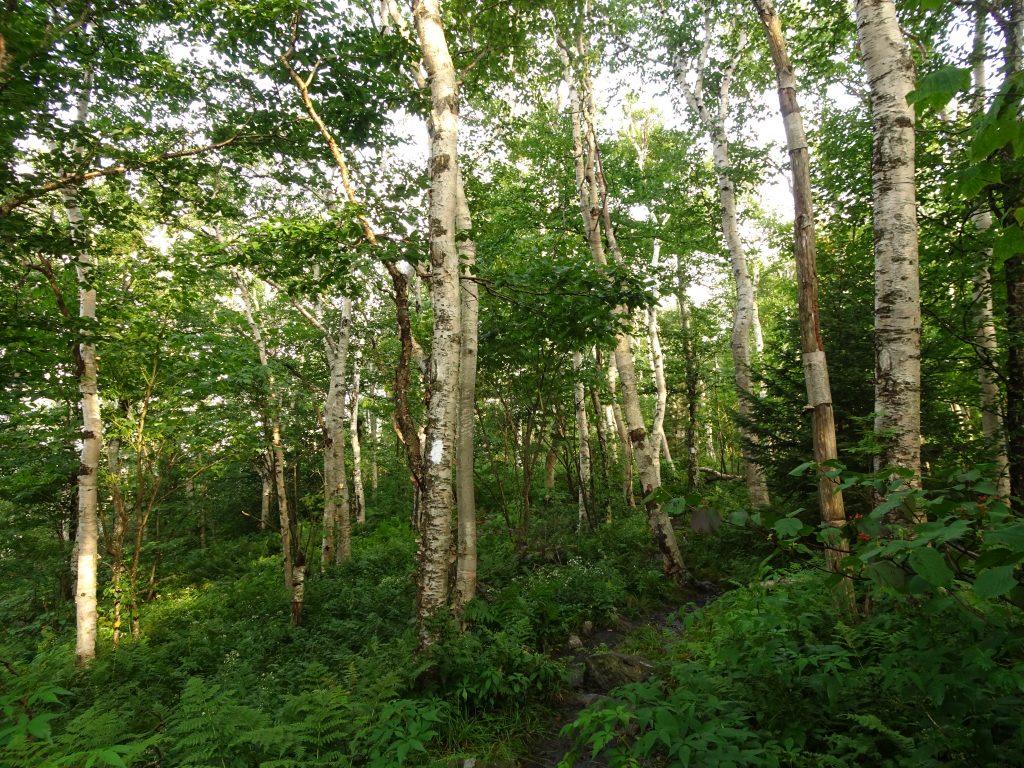
Grove of Paper Birches
I took this photo of a birch clump near my stealth camp site. You cannot tell from the photo, but the trunks are mammoth, each one about 30 inches in diameter. The clump sits right on an old rock wall which is probably why they were spared from the saw.
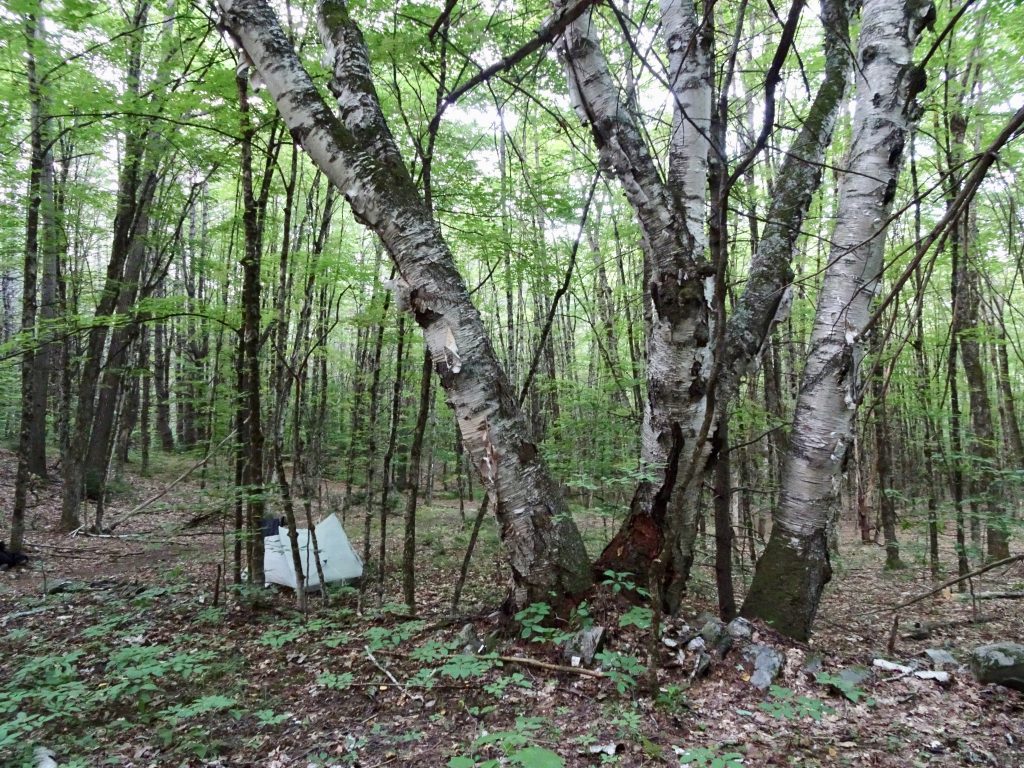
Huge Paper Birch
There are many Yellow Birch and Sweet Birch (also called Black Birch) trees in the Vermont forests. They tend to grow larger than the Paper Birches. I saw many that were more than two feet in diameter, while the Paper Birches were mostly less than 18 inches. These two birches have similar leaves, but different barks.
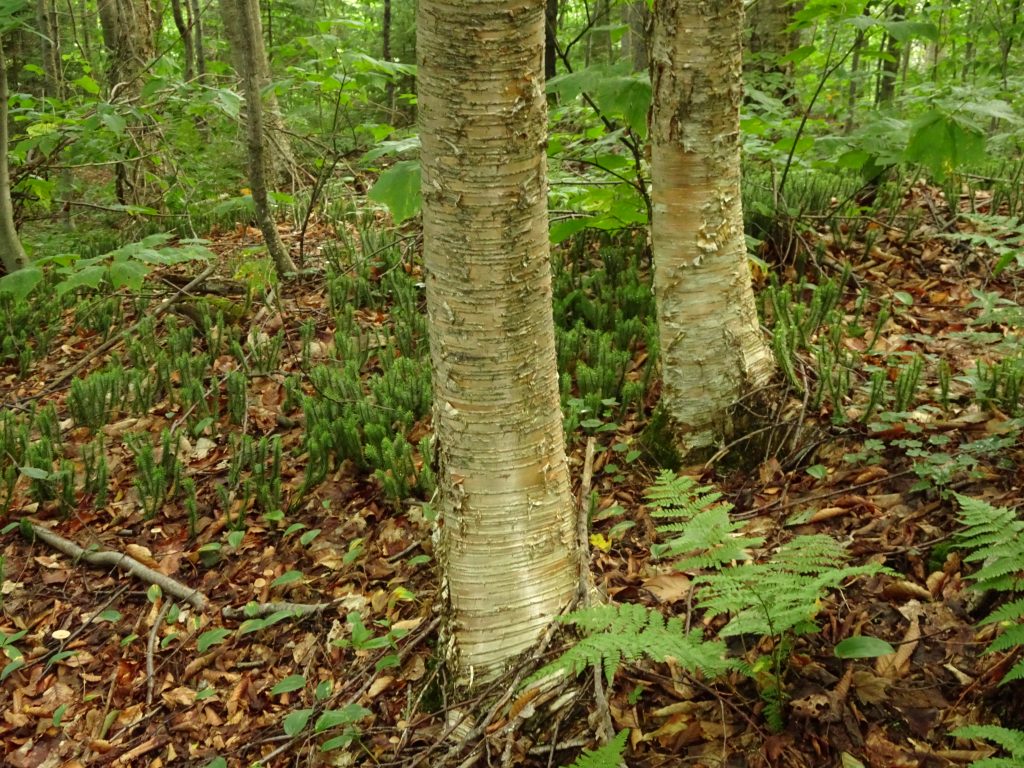
Yellow Birch
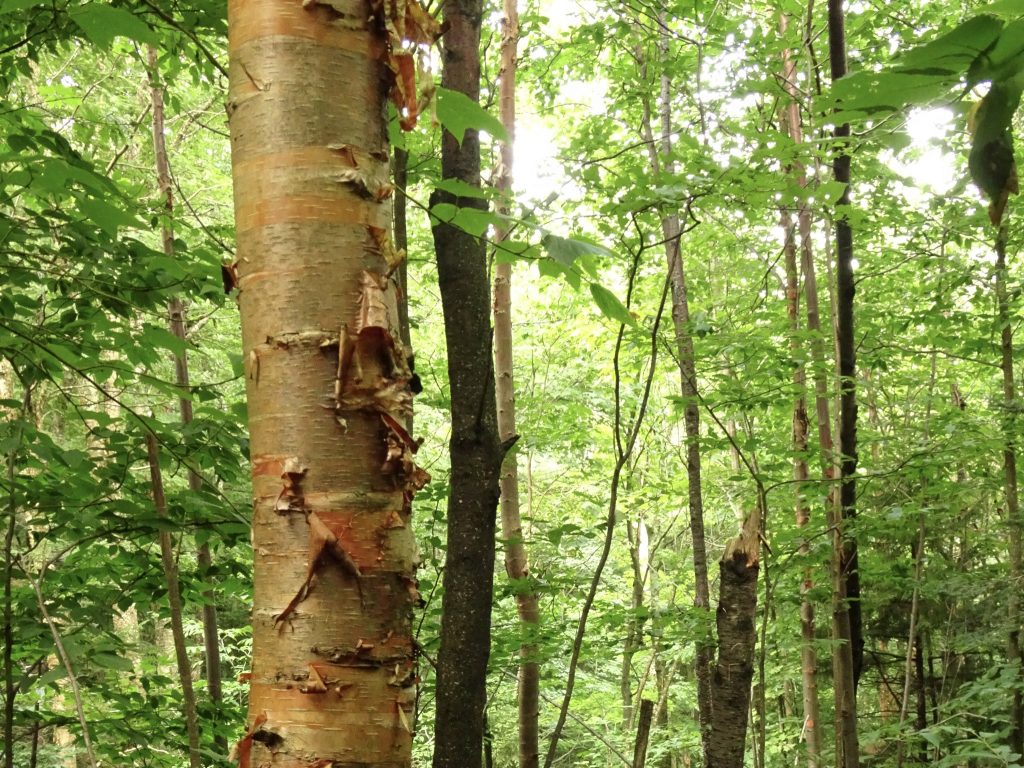
Sweet Birch
I have seen a lot of mushrooms up and down the trail, but Vermont takes the prize for the quantity and variety of its mushroom crop. I have not made any attempt to identify them, but here are some of my favorites. If you want to see my entire collection, click here.
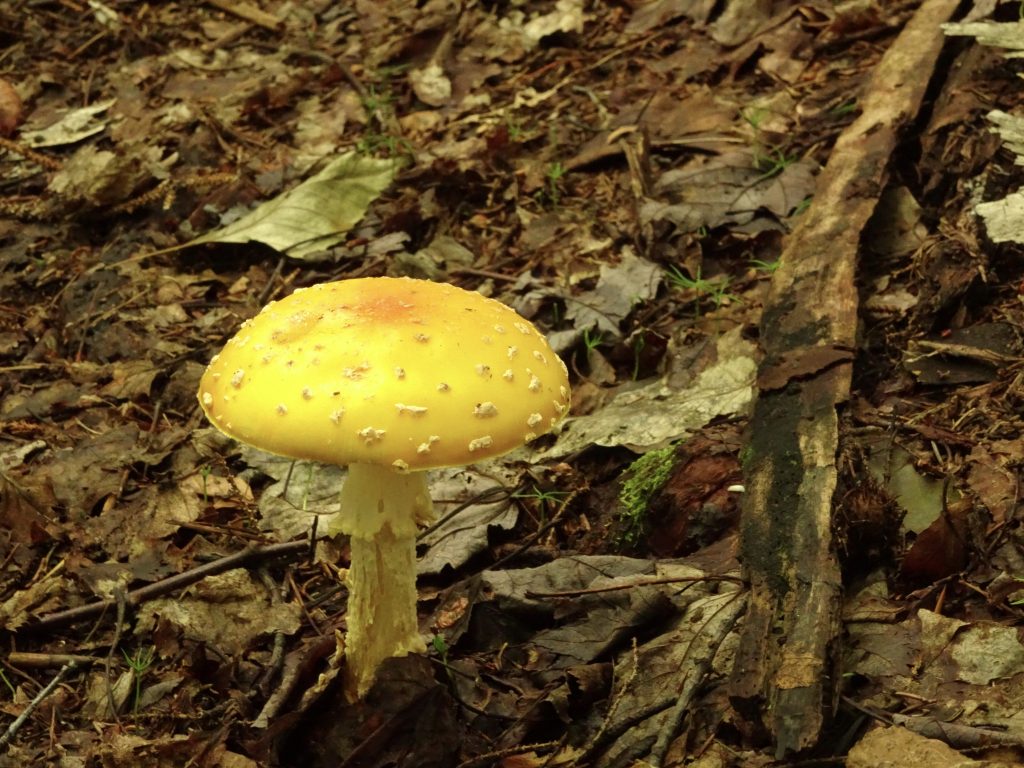
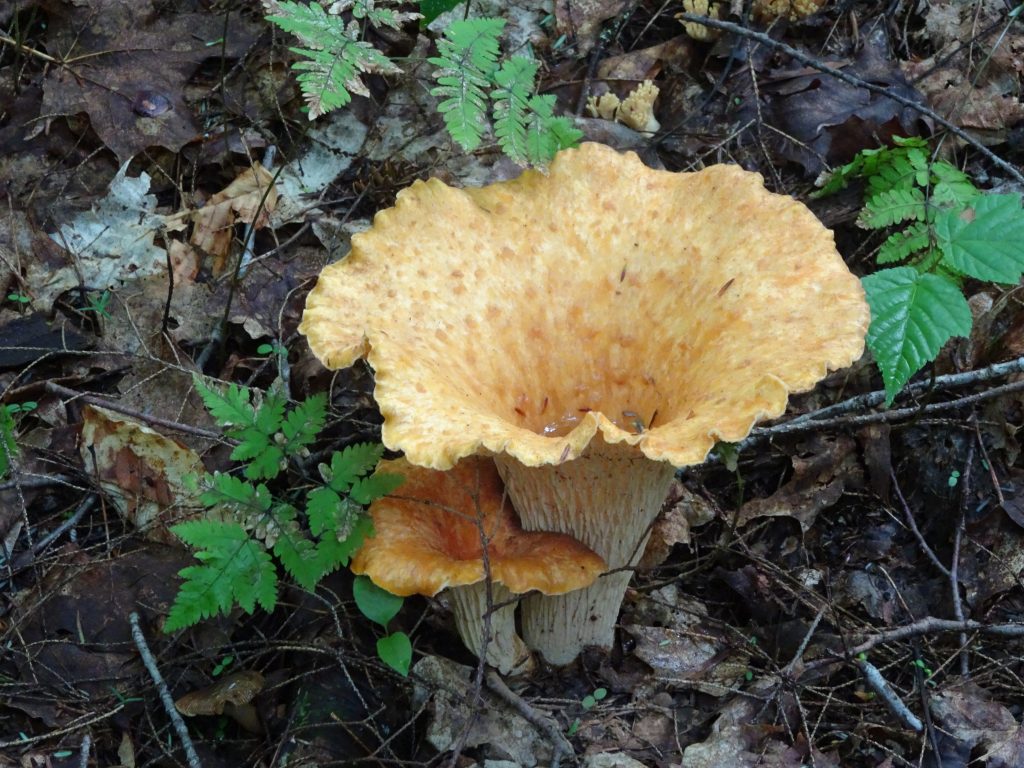
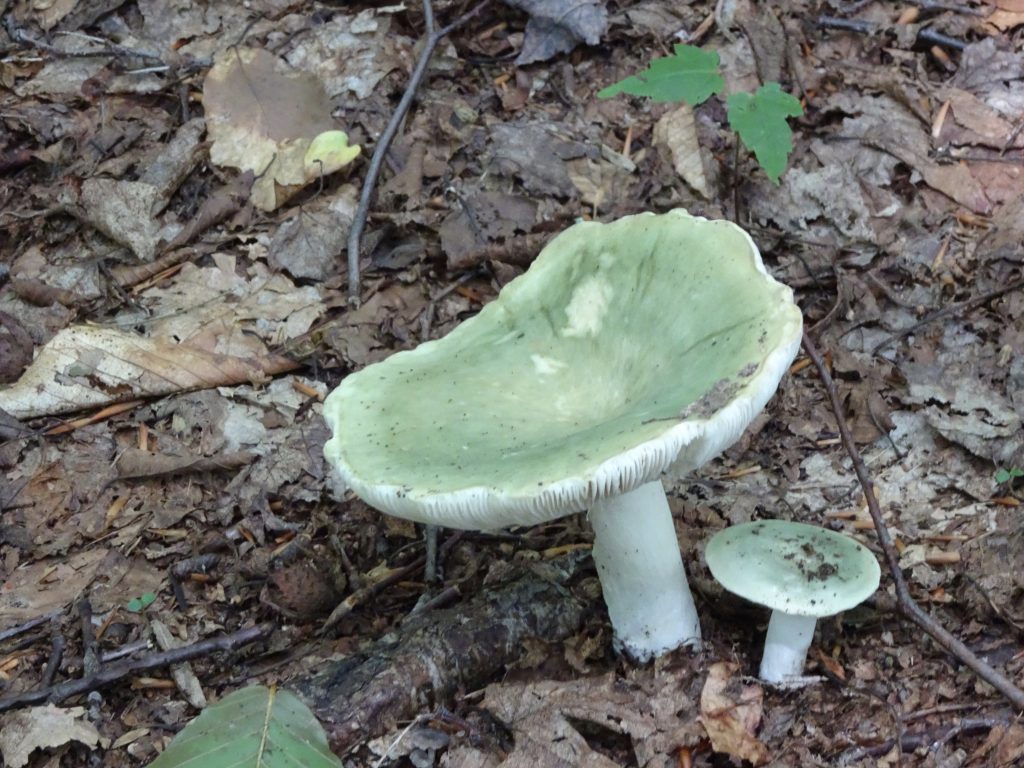
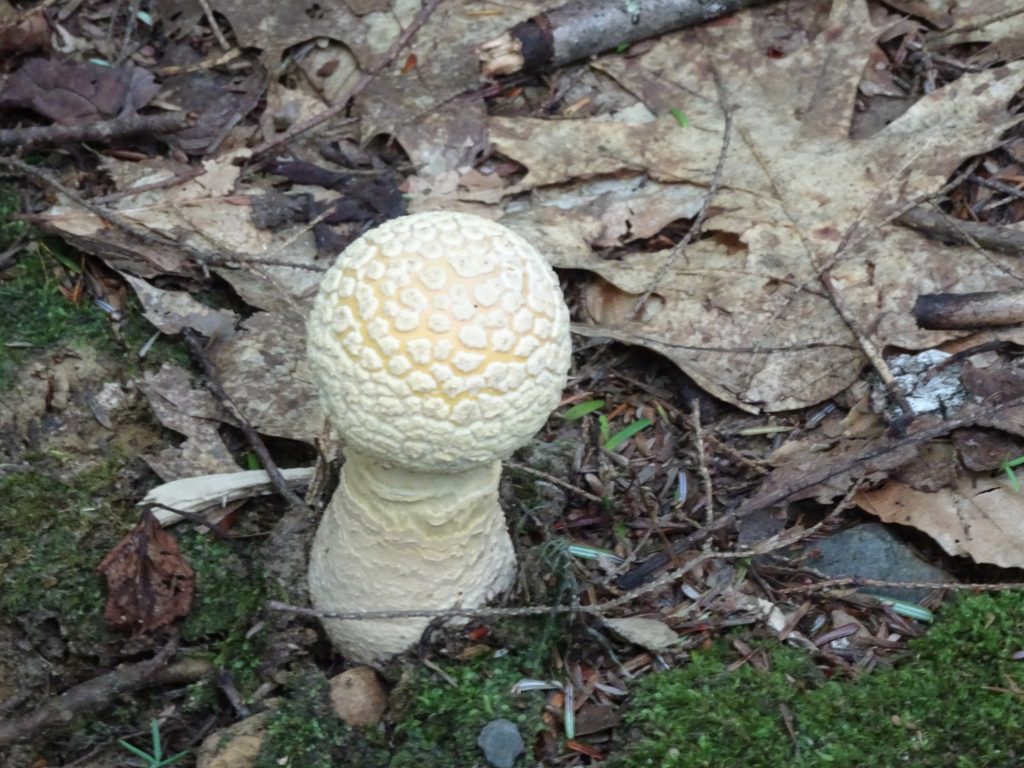
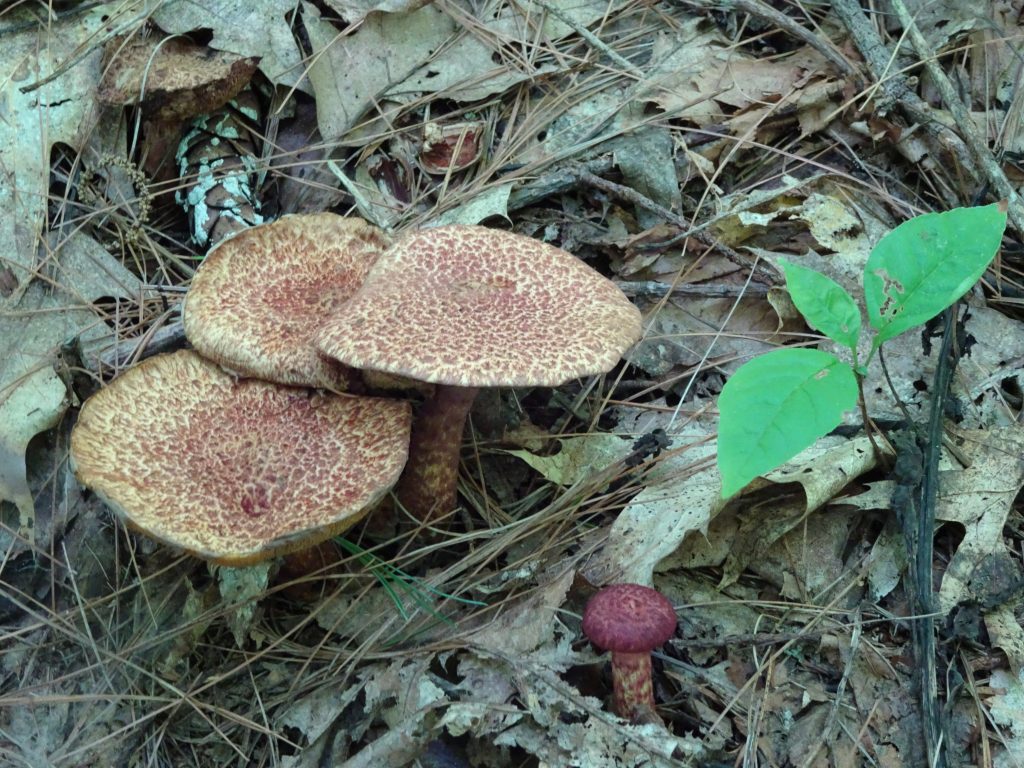
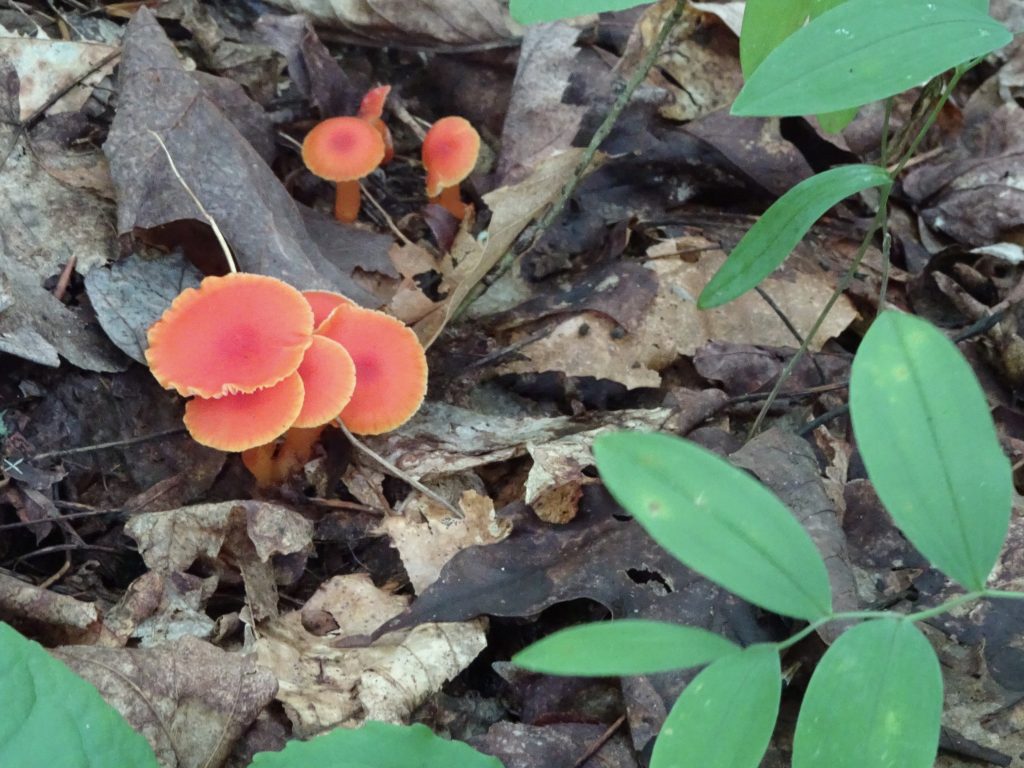
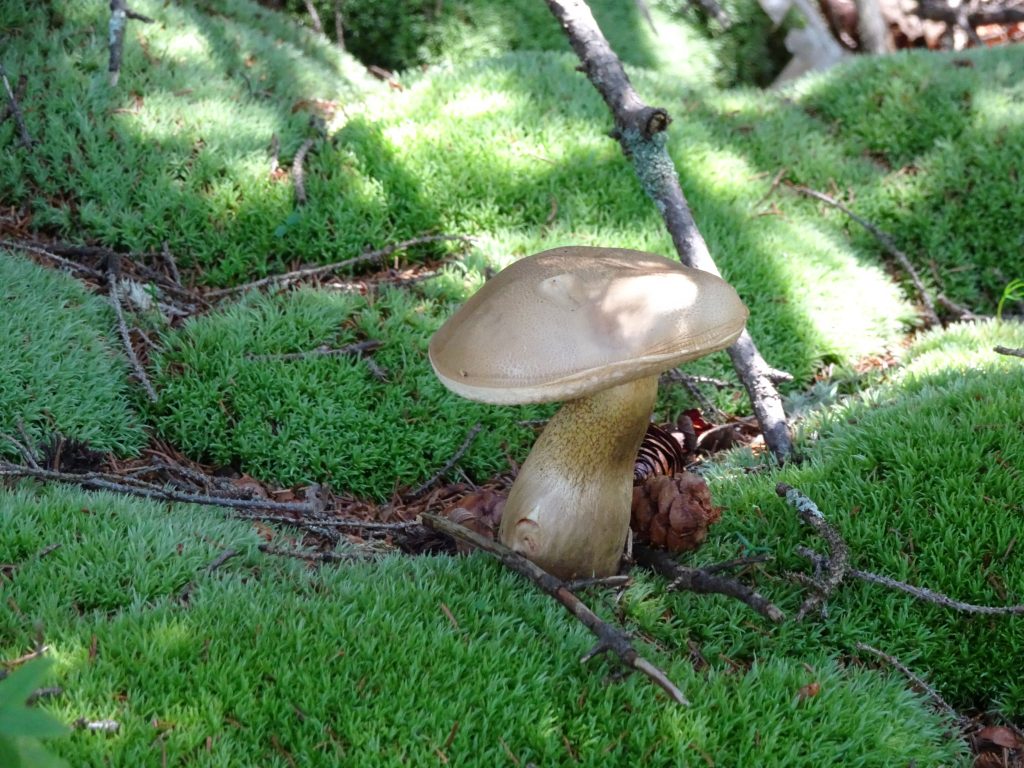
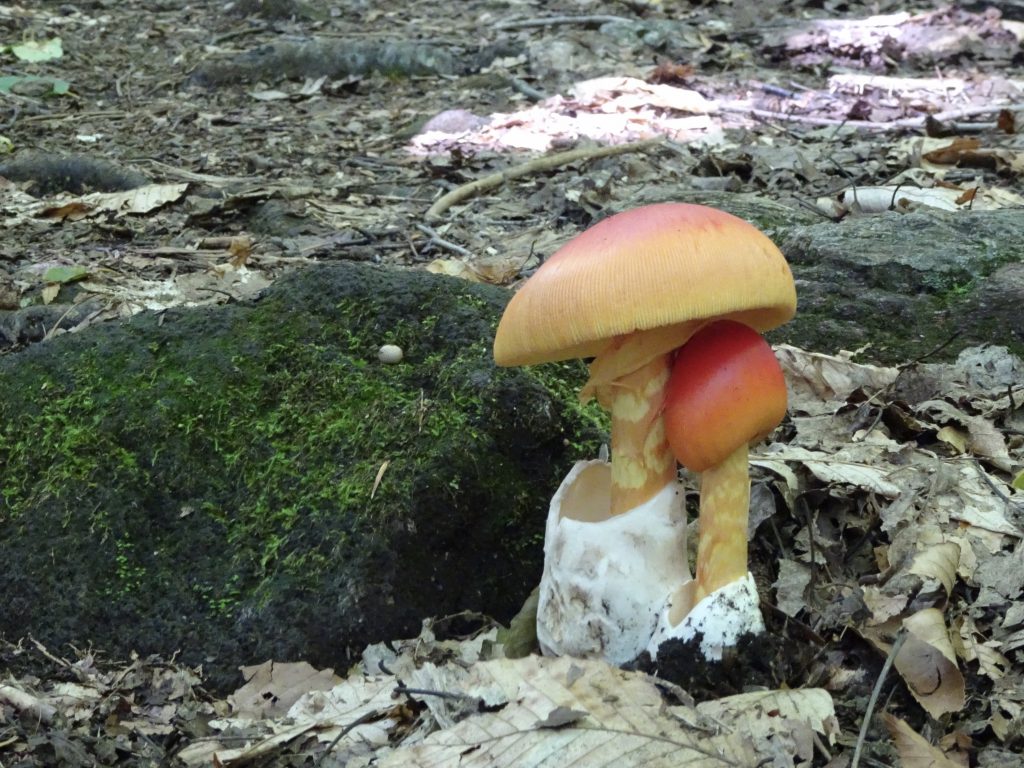
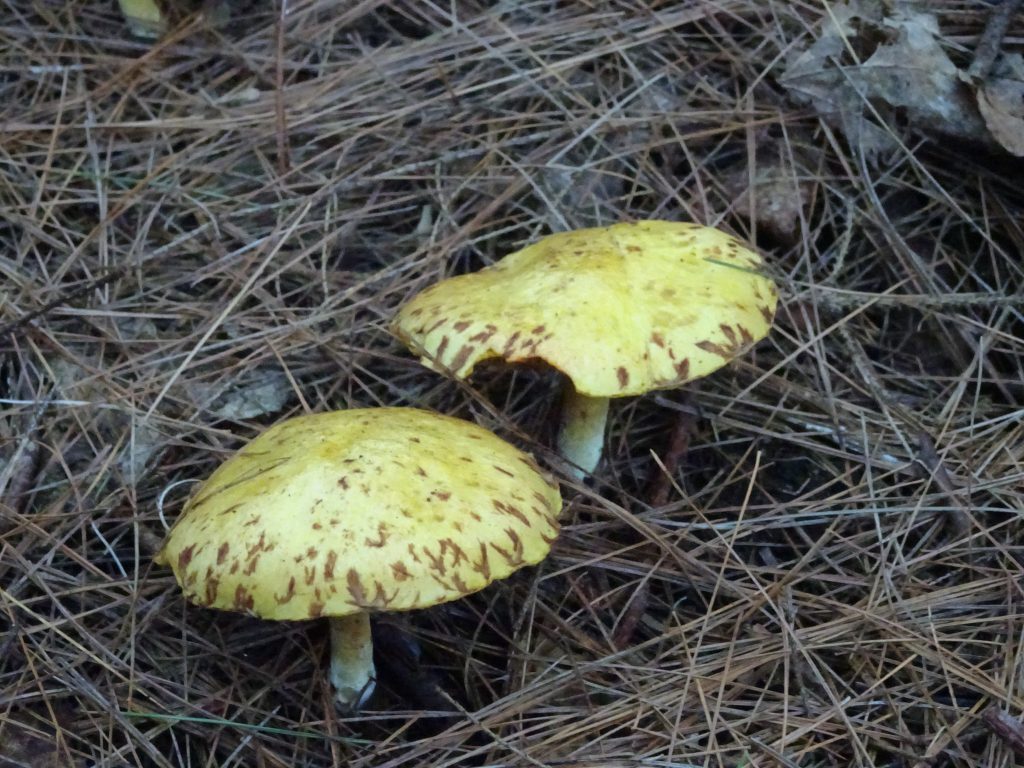
From my very first days on the trail, I have been hearing this very musical bird singing from the treetops. Its song has very flute-like quality. Once the leaves were on the trees, I had nearly given up hope of seeing one. Finally, in Massachusetts, some 1500 miles into the trail, I caught this one in the act. It is only fitting that I got its silhouette since this bird has been a ghost to me.
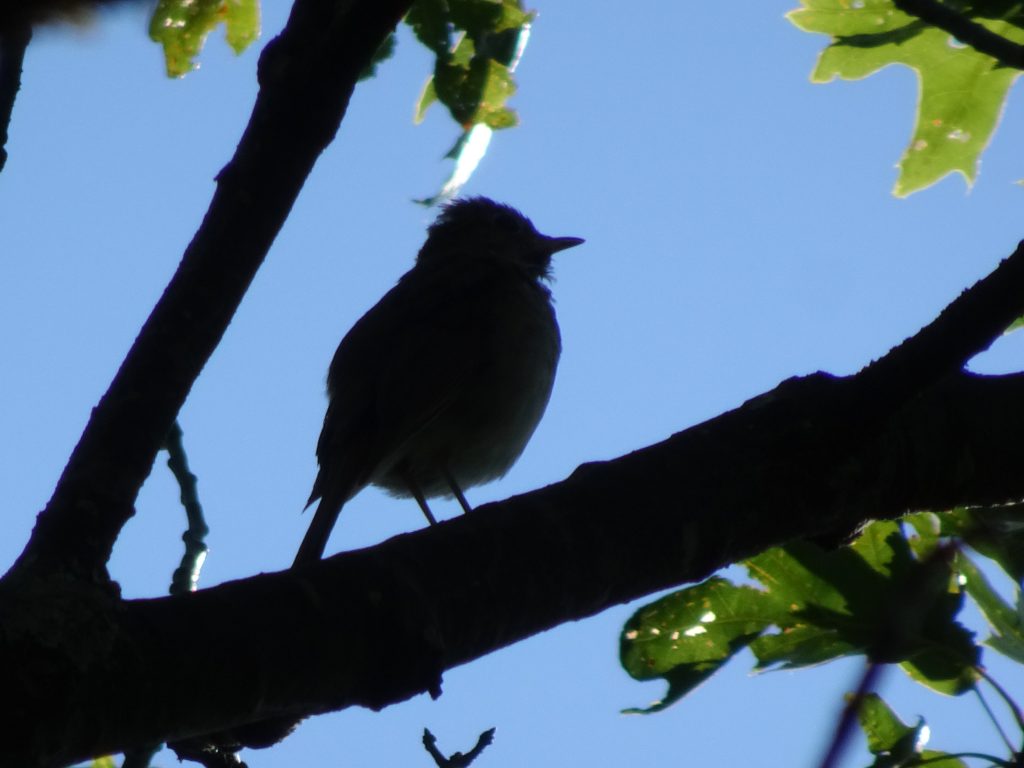
Hermit Thrush (singing)
A quick Google search using “musical bird flute-like” readily identified my mystery bird as the Hermit Thrush. What a fitting name! It turns out that I had many times seen this bird foraging in the understory, but had never made the connection with my musical bird. Of course, it makes perfect sense that a bird would not sing down low where its predators are lurking.
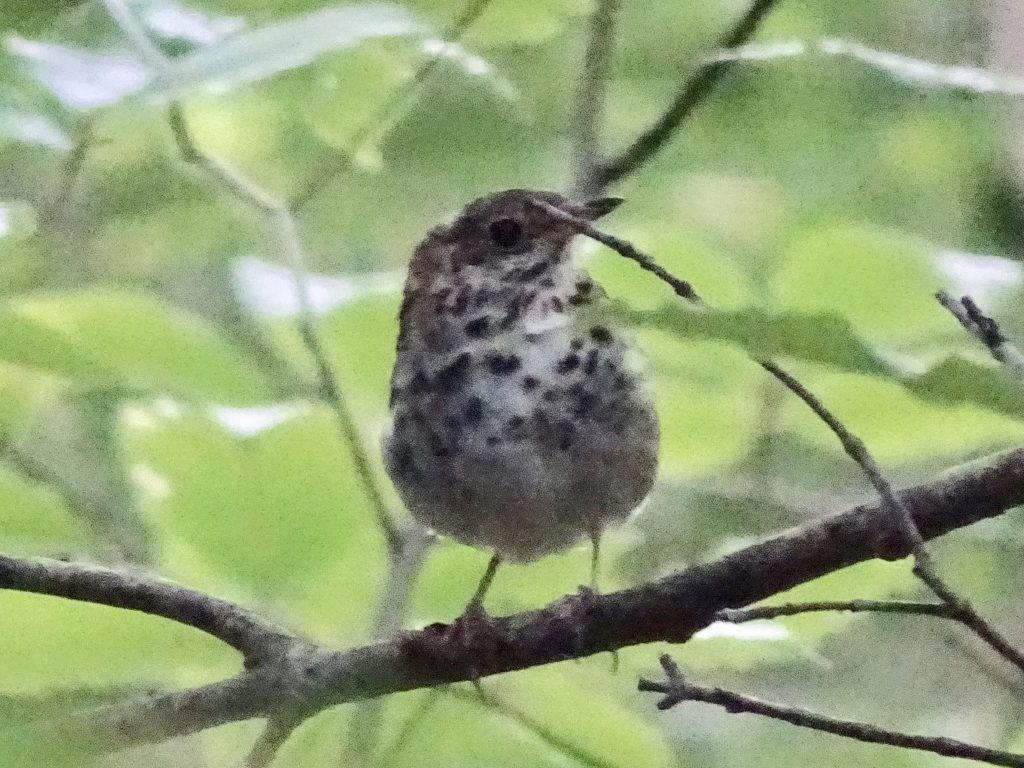
Hermit Thrush (foraging in the understory)
A little research revealed that my thrush was well regarded by both artists and scientists. The poets Walt Whitman, Amy Clampitt, and T.S. Eliot have all made references to this bird. Unlike the human larynx, which has a single pipe, all birds have a syrinx having two pipes. Scientists have found, that unique among birds, the Hermit Thrush simultaneously sings two notes (one in each pipe) that are in musical harmony. I knew there was something special about this bird’s song! This thrush’s call even appears in Super Mario Galaxy for the Nintendo Wii. And, last but not least, the Hermit Thrush is Vermont’s state bird, which is why I have featured it in this post.
In an earlier post, I showed pictures of Trillium plants with their pretty white, yellow, and red flowers. Along the trail, I am still seeing the Trillium plants, but now with a single red berry in place of the blooms.
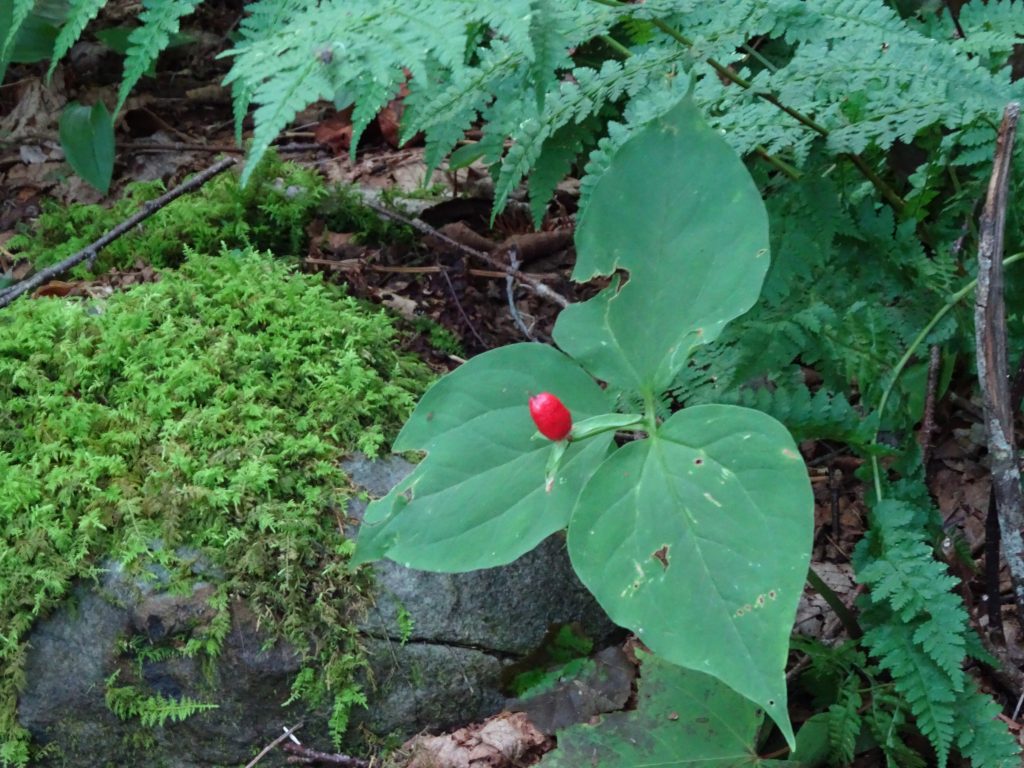
Trillium
Other flora and fauna…
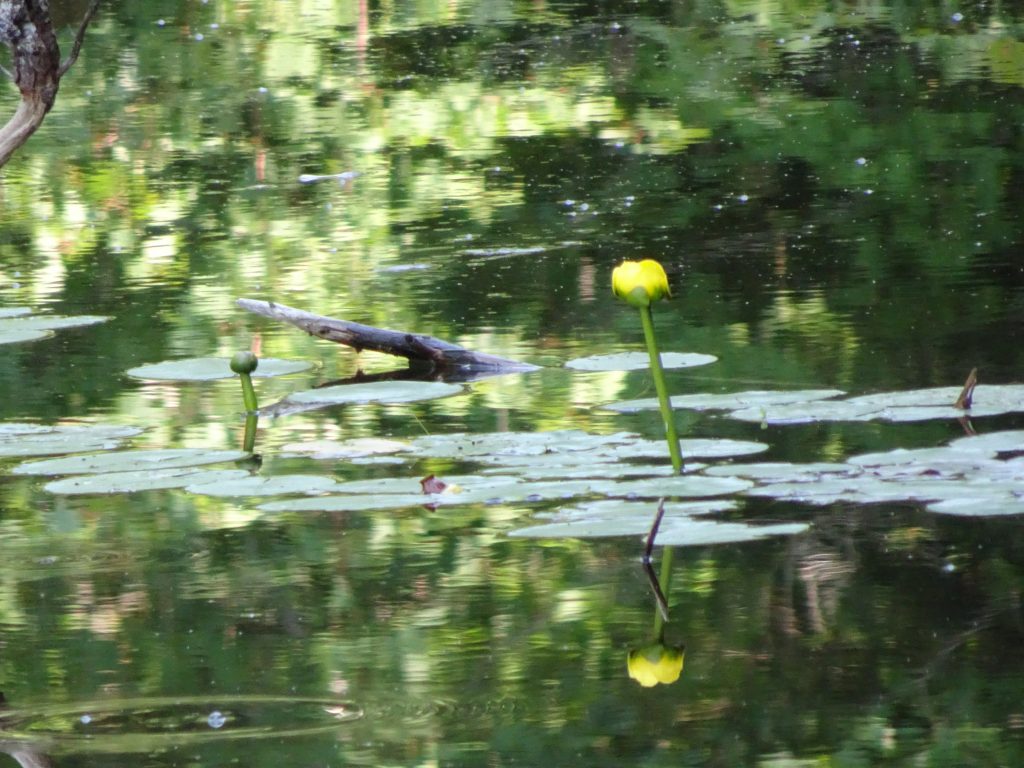
Yellow Pond Lily
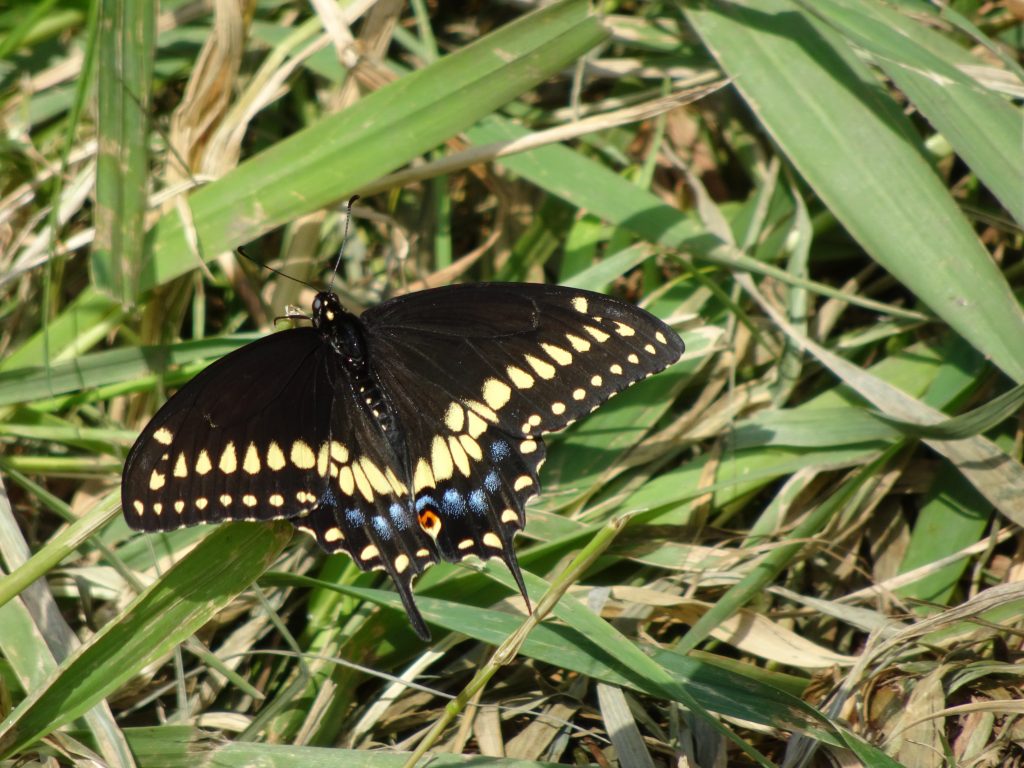
Black Swallowtail Butterfly (male)
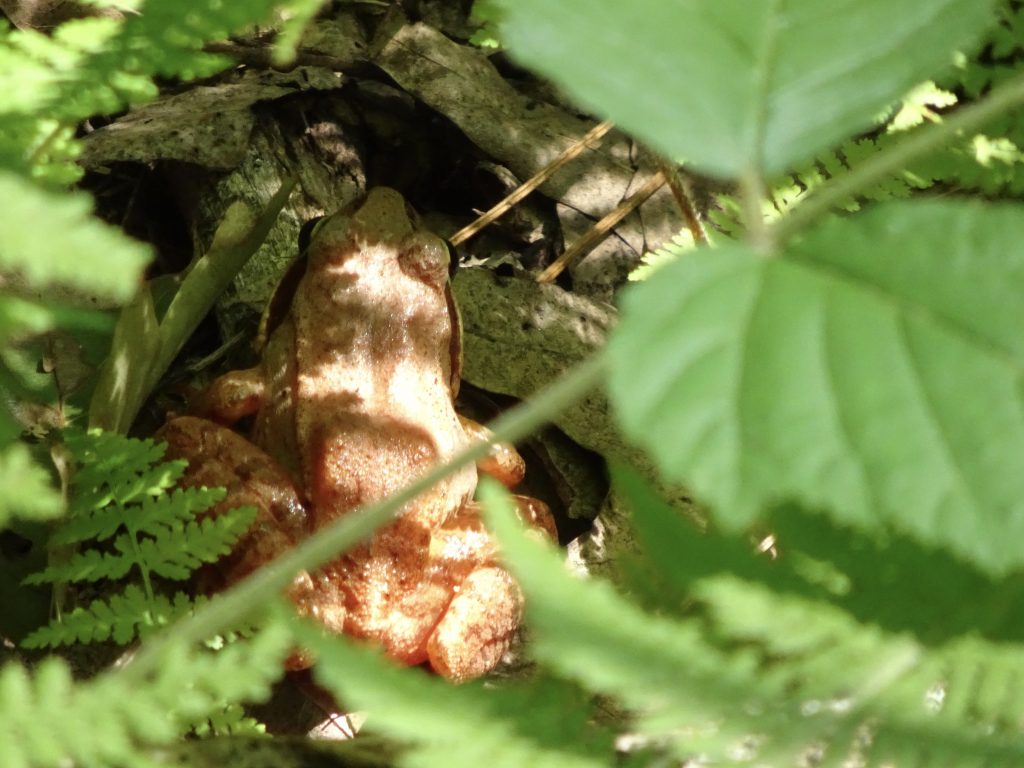
Wood Frog
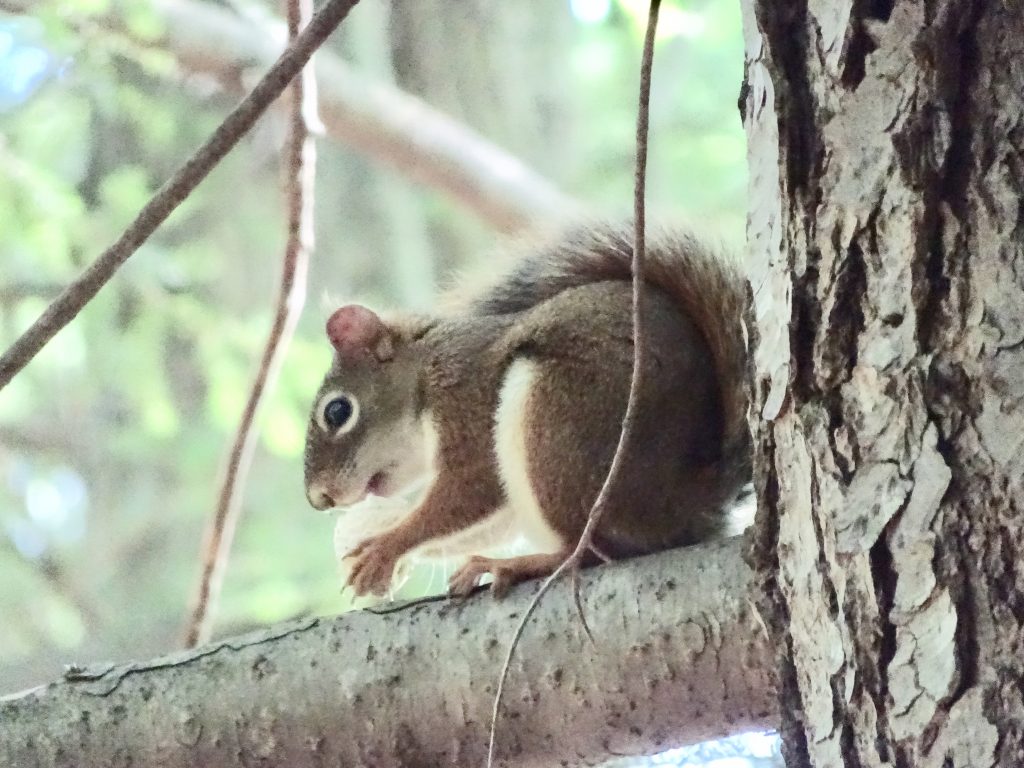
Red Squirrel munching on a mushroom
Next stop for me is New Hampshire, home of the White Mountains. The Whites have a reputation for steep climbs, beautiful vistas, and crazy, unpredictable weather. Mount Washington holds the record at 231 mph for the highest recorded wind speed not associated with a tropical cyclone. I have my cold weather gear ready to go, but I am hoping for at least some fair weather as I pass through this mountain range.
If you’d like to receive an email when a new post is up on the blog, click the email icon on the bottom of the page to subscribe. Thanks for following!
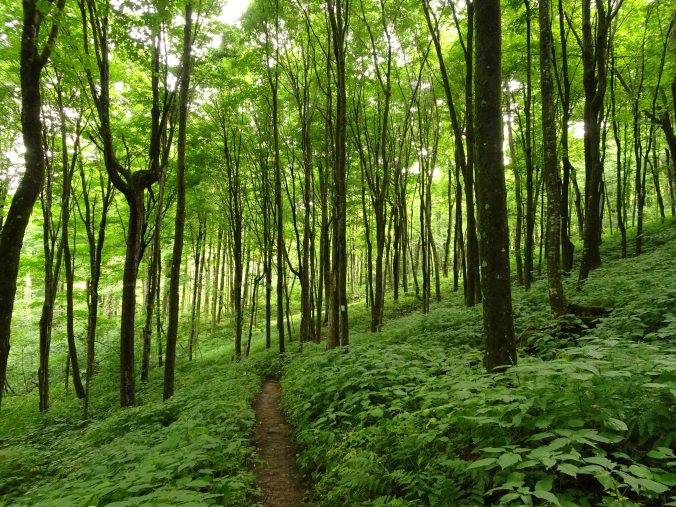
Randy, this might be your best post so far! Loved all the pictures, but especially the mushrooms and the beaver dam. Our cat, Nikko, took exception to the hermit thrush singing in what he considers his own territory. Started crying midway through and didn’t stop til it was over.
Hitting New England in the fall looks like a great idea from these photos. Very nice Randy!